|
Interview with Michael Martin, grandson of George Martin Senior By Jessica Rath Image credit: EatingAsia CC 2.0 How many of you, our esteemed readers, remember General Stores? Before supermarkets, shrink-wrapped groceries, packaged goods, self-checkout, credit cards, and so many more new-fangled contraptions? When sugar, flour, beans, etc. were stored in big bins and had to be hand-measured into a paper bag by a clerk who then weighed the item and calculated the cost? In Germany where I grew up, such stores were common at least until the end of the 1960s, even in big cities where one could find several supermarkets as well. Image credit: EatingAsia CC 2.0 Martin’s, the general store in El Rito which closed its doors for the last time on August 29, 2009, was different from my German memories. At Martin’s, besides groceries one could buy horseshoes, nails, screws, bolts, and hammers, pails, ropes, medicines, crockery and dishes, soap, lanterns, chicken feed, kitchen gadgets – just about anything the local families and farmers might need. Oh, and one could get gas, too. It was a sad event for the community when the store closed, people had to drive to Abiquiú or Espanola for almost everything. The building stood empty, but unchanged for many years. I always wanted to find out more about its past. Greg Martin, who ran the store until it closed and who is the grandson of the original owner George Martin, moved to Albuquerque, I learned. But his cousin Michael Martin (everybody knows him as Mike), who is the Chair of Northern New Mexico College’s Board of Regents, lives in El Rito and kindly agreed to meet with me. Over a cup of coffee at the Abiquiú Inn we had a lovely chat. First of all, a quick family history, so you’ll know who Mike is referring to later. George Martin Senior started the store together with his business partner John Sargent in the 1920s and eventually became the sole proprietor. He was married to Margaret Allen Martin, an Irish nurse with the nickname Dambo, who ran a Maternal and Child Health Care Center in El Rito. They had five children: John, Tom, Roberta, George and Pat. Tom, and later Tom’s son Greg ran the store until it closed. “The Martins also acquired a ranch, later managed by their son Pat, daughter-in-law JoAnn, and grandchildren Mike and Tim.”(1) Which means that Mike, the person I was talking with, is the grandson of the store’s original owner, and that his uncle Tom and later his cousin Greg ran the store, while he grew up on his father’s ranch. Where did your family originally come from, I asked Mike. “My grandfather, George Martin, came from Alsace Lorraine, and went to school at Manhattan University in New York,” I learned. “Then they thought he had tuberculosis, so he came out west for his health. Because he had a bachelor's degree from Manhattan College, and they needed somebody to be the principal at the school here, he moved to El Rito. And then he met my grandmother, who was originally from Ireland, Margaret Allen, and they were married in 1912.” Wait a minute – is Mike talking about the El Rito campus of Northern New Mexico College? I had no idea it had such a long history. (1)Rio Grande Sun, Obituaries Image credit: Gia Marie Hook “It was founded in 1909 as a normal school to train teachers”, Mike informed me. “It actually became a college before we were even a state, in 1912.” This is so interesting that I had to do a bit of research. The school was known as the Spanish American Normal School and was a teacher training institution, originally meant to train students to become teachers for the local schools in Northern New Mexico. It was the first institution for Hispanics in the United States. In 1969 the last class graduated from Normal School, and it became part of Espanola’s Northern New Mexico College in 1971 (actually, a community college until 2005). Image credit: EatingAsia CC 2.0 “My grandfather was working at the college,” Mike continued. “He was their first principal in 1910, and then in 1913 they promoted him to be President. He was president for one year, because in 1914 they moved the family to Pueblo, Colorado. They moved back to El Rito in 1925, and George went into partnership with a man by the name of John Sergeant. They both had a store together. Eventually the partnership dissolved, and my grandfather went into business by himself. This must have been about 1930, where the current Martin store is.” “My grandfather's degree was in languages. He spoke German, French, English, and Spanish. He was very good friends with Mr. Bode, with Martin Bode, Karl's father.” Sure, because Martin Bode immigrated from Germany at the turn of the last century. The area of Alsace-Lorraine was part of Imperial Germany from 1871 until the Treaty of Versailles at the End of World War I, and even today people in the region speak a dialect which is similar to Swiss German. At the same time, people are fluent in French and German. One can imagine that Martin Bode and George Martin would easily communicate in German. How was it growing up in El Rito as a kid, I wanted to know. Did you go to school somewhere in El Rito? Was there a school? I had no idea, of course. Mike corrected me. “I went to school here in Abiquiú, to the St. Thomas Catholic school. I started in 1964 in the first grade, and went through the spring of 1971 when they closed the school. That’s when I was in the seventh grade. I spent my eighth grade at El Rito Elementary, then went to Mesa Vista High School, and graduated in 1976.” So how did you get from El Rito to Abiquiú, I asked. “There were three or four families that carpooled,” I learned. “At the school, we had four nuns, and there were two classes for each nun, and school was held in what's now the Parish Hall. There were two classes in each room per nun.” So there was no school bus, I wanted to confirm. “Well, there was a school bus that picked up the kids here in Abiquiú, but it didn't go all the way to El Rito,” Mike explained. When I heard that Mike attended Mesa Vista High School near Ojo Caliente, I was reminded of my recent interview with Quentin Wilson; both he and his wife Maria had been teachers at Mesa Vista. Did he know them, was he their student, I asked Mike. “I know them both very well,” was his reply, but they were not his teachers. “He is quite the adobe specialist, and he helped us with some projects at our house.” Funny, how this all weaves together. But then again, in small towns everybody knows everybody, of course. Mike went to college at the New Mexico State University in Las Cruces, and graduated in 1980 with a bachelor's degree in agriculture and economics. And then he returned to El Rito and worked on the ranch, because his father inherited the ranch, while his Uncle Tom got the store. I imagined that it would be fun for a young kid to spend time at a grocery store where everybody you know would show up sooner or later. But it turned out that I was wrong. “We used to help my Uncle Tom do the inventory at the end of the year”, I learned, “but that was about the extent of my time at the store. We stayed pretty busy on the ranch with all the work to be done there.” Sure, that made sense; I didn’t think of that. But I did want to hear about the store – was it a true general shopping place, where one could purchase just about anything, I wanted to know. “Yes, it was a general store,” he confirmed. “They had everything. They had groceries, they had hardware, dry goods, just about anything that you need. My Uncle Tom had horse shoes, plumbing parts, feed for the livestock, candy, and he had a gas station as well.” Image credit: EatingAsia CC 2.0 “The store was really busy for a long time. My uncle used to have a couple of gentlemen working for him, and then a couple of young boys would come in after school and help them with stocking the shelves. Yes, they did a lot of business.” As Mike was talking, I could almost picture everything, the cash register, the balance scales to weigh dry goods, the baskets with apples, carrots, and other produce. I could smell a mixture of onions, garlic, and spices. “When they first had the store, there was a big counter in the front. You came in and gave your list to the proprietor, and they filled your order while you waited for your items. Then later they switched over to where you would actually go shop for yourself. But for a long time, there wasn't anything like self serving. No, you came in and visited with the other people while they got your groceries together.” It must have been a social hub of sorts, where people could meet and hang out. Mike confirmed: “The post office was right across the street; the building that’s right next to El Farolito used to be the old post office. So, everything was right there together. You could come to get your mail and then you could shop. And you could get the gasoline for your tractor or your truck.” And then it all changed. It became harder and harder to make a profit because customers dwindled. Were there more people living in El Rito then, or why did business sort of peter out? “I think people weren't nearly as mobile back then as they are now,” Mike explained. “And they couldn't easily get to town. You know, back in the 20s, there were very few automobiles in El Rito. People just had horses and teams and wagons, and it was just subsistence living. It was a big deal to go to Espanola even back in the 60s.” And there were no streets, only dirt roads. If it was raining, it would be a drag to go to a store somewhere farther away.But then your cousin Greg at some point had enough, I suggested. “Yes, Greg closed the store in 2009. He had run it since 1974 or so, and business had slowed down. A lot. People were doing a lot more shopping in town, and he was just ready for some peace and quiet.” Was it sad and difficult for the community when the store closed, I asked Mike.
“Yes, it was very hard,” he confirmed. “Greg was the only one selling gasoline fuel at that point. The other store in El Rito had been selling fuel, but then they stopped so we no longer had any gas station in town. We had to drive to Bode’s or go to Espanola or to Ojo Caliente to get fuel, and that was a big adjustment for everybody.” I asked Mike about the work on their ranch, what he had to do when growing up. “We had a lot of cattle,” he told me, “so we had to irrigate some fields and grow alfalfa, and then we cut it and made hay bales. We’d take the cattle up into the mountains, to our forest service permit area, and they'd spend the summer up there. So we had to go up there and check on them, and then we’d bring them back home, so they'd spend the winter there in El Rito on the fields, and we'd have to feed them every day. Taking care of animals was a big part of the routine.” Mike had a final word: “The community has been very, very good to our family. They were always supportive and I've always felt lucky. It’s been a privilege to be able to live in El Rito.” Thank you, Mike, for telling me about your family, about your past, and about the iconic store in El Rito.
4 Comments
Interview with Santana Shorty By Jessica Rath What better way to introduce a poet and writer than with one of her poems? So, here it is: Lake Valley At the end of the road, there is a gate It is an old gate The kind that takes two arms to pull Common rez courtesy means the passenger opens the gate while the driver passes through The mud ruts make everything hard An abandoned one room house keeps guard at the gate Someone told me once a family of five lived there I don’t know if it’s true, but it could be There is a thrum in the ground Petrified wood scatters with pottery shards The wind carries small porous pebbles of ancient lava In the distance, I see a group of wild horses The days of taming them are gone The road has alternate paths forward A way cut through when the rains came At the end of the road is the house, hogan, and corral A lonely tornado ruined the house long ago someone told me Many people once came here for ceremony My grandfather sat at the head of the hogan A circle of us sat along the wall Tobacco smoke holding the room, keeping us warm There was blue corn mush and elk meat with piñon There was tea in a pail There was sweet corn and canned fruit I used to pick out the cherries for myself The thrum tenderized the ground The drum pulled the room inward to the fireplace A song carried out the chimney, ribboned with wind that finds me here today, years later opening a gate for ghosts to pass through Santana Shorty A good poem captures your attention by building a multi-dimensional picture: it creates a rhythmic, visual image which is imbued with your feelings, memories, and thoughts, as if tiny hooks would pull little snippets from your mind and weave them into a reflection of the words you read. At least, that’s my experience reading Santana’s poem, and now I want to learn more. When did she start writing poetry, how did she become a writer? Although she has a full schedule, Santana graciously agreed to chat with me. She was born in Santa Fe and grew up in Abiquiú, Santana told me. The family lived in Plaza Blanca, and when she was about eight years old her parents separated. She and her Mom moved to Barranco while her Dad moved to Lindrith, a small village past Coyote and Gallina. Santana’s father is Navajo, and she is a member of the Navajo Nation. Her mother is Anglo and has been a teacher at Abiquiú Elementary for many years. Santana started school there, then went to Fairview Elementary in Espanola for a couple of years because her mother was teaching there, and then returned to Abiquiú for fifth and sixth grade, again because her mother was teaching there. For middle- and high school she attended the Santa Fe Indian School in Santa Fe. “My mother is an amazing teacher,” Santana told me. “She's taught for 25 years, and she always stuck with elementary, first grade, second grade, those are her favorites. She encouraged my and my sister's artistic interests, she really nourished those. I've always been a big reader, and she got me the books I wanted to read. So I've been reading a lot ever since I was really young, and I've been writing since I was really young. My Mom did a remodel recently and found a bunch of boxes filled with things that she had collected over the years. In some of the boxes there were some journals with poetry I wrote when I was six years old.” How nice of her mother to preserve all these early records! I bet it was fun to sort through them. For middle- and highschool, Santana was a dorm student at the Santa Fe Indian School, something that was both challenging and enriching. On the one hand, it was hard because she loved Abiquiú and being with her family. She would try to spend the weekends at home, but often Cross Country and Track and Field events took place on Saturdays. It was inconvenient to go home for one night and be back at the school by Sunday afternoon, so she would stay for close to two weeks sometimes. On the other hand, it taught her self-reliance and independence. “I was valedictorian of my school, and I got a full-ride scholarship to go to Stanford, which is where I went for my undergraduate studies,” Santana explained. “One of my main extracurriculars was poetry.” I wanted to hear more about Santana’s poetry. She had mentioned that she wrote poems at an early age – what motivated her? Is it even possible to put that impulse into words? She had to think about this for a moment. “For me, it is a way of processing the world,” she answered. “The artistic component is a byproduct of trying to understand life and experiences. It's not always that I want to write a good poem. It's that I have something on my mind that I can't let go of. The only way for me to satisfactorily explore that is via poetry. And then afterwards I recognize that I have a piece here that I want to work with.” This is so interesting. It’s almost as if something is nagging her, as if a poem knocks on her head and wants to come in and then she has to explore the meaning of it. Santana explained further: “A lot of artists have their little obsessions, the things that they have to return to again and again, and maybe at some point they can move on to the next thing. It's part of that. You have to get it out of your system, you have to explore this thing so many times, until you can finally put it to rest and don’t have to think about it anymore.” And what are the things that want to be explored, I wanted to know. Do they come from the past? Or from relationships? Do they come from nature? “For me, what tends to be knocking usually comes from nature,” I learned. “I write a lot of poetry about landscape, and the desert. New Mexico. That's something I can always write about, and will forever be obsessed with. Sometimes it also can be current events or a life experience.” She continued telling me about her education: “I went to Stanford in the Bay Area, and I graduated with a biology degree. I didn't really know what I wanted to do, so I ended up in the tech industry, and I worked in the tech industry for a long time in the Bay Area. In 2019 I moved back to New Mexico because I missed it and I wasn't really happy in the Bay Area anymore. I tried to pivot into a career in the public sector and I worked for the Santa Fe Public School District in their Native American Student Services Program. I was hoping to shift into a full time government position, but then the pandemic hit, and there was a hiring freeze. So I went back to the tech sector because it was reliable.” “I was working for a bank creating banking software,” Santana continued. “During all this time I was writing. I wanted to get more experience with writing, I wanted to learn how to write more formally. So I started to take some continuing education classes with UNM and the Institute of American Indian Arts, and eventually one of the teachers encouraged me to apply for the IAIA’s MFA program in creative writing. But I didn't know if I was good enough, I didn't know if I had the credentials. My Dad also went to IAIA in the 80s for Studio Arts. He's a sculptor and a painter. And so eventually one of my poetry teachers from the Continuing Ed classes pushed me a little: ‘Come on, you should have already applied!’ So I did, was accepted, and started the program in 2022.” It was fascinating to listen to Santana. “It was the best decision of my life, I found my people and my community in that cohort. I had started a novel, and the program helped me finish the novel, I finished the first draft in February of last year, and I graduated in May. After getting my MFA I really wanted to have my writing passion mimic my day-to-day existence. It felt as if I had split personalities, my big-girl banking job in the daytime, and then writing at night. What job could I do that would enable me to do both?” “And then two weeks after my graduation the president of NMSA (New Mexico School for the Arts) here in Santa Fe called me and said that they had an opening for the Creative Writing Department chair position! I applied, started the interview process, and they offered me the job at the end of June last year. So I gave notice to my banking job, moved to Santa Fe, and started as the department chair. Now I teach creative writing to high school students, run the department, and I still get to work on my own creative projects and writing. Life has really shifted in the last year to align with my ultimate dream job.” Doesn’t this sound fantastic? We often have to work jobs simply to make money, jobs that are not ideal. But Santana could give up her banking job and now pursue her passion. She can work in a field that is most dear to her heart and that supports her. That's so impressive. Santana agreed. “For a long time, I didn't think of it seriously. I just thought of writing as my hobby. For many years, especially after graduating college, I didn't know what my dream job would be. I knew what my dream or my passion was, but to turn this into a job that would support me? I didn’t think that was possible. But I tried new things and pushed myself out of my comfort zone, and that’s how I found out what my dream job could be. Yes, I'm going to take a big pay cut from the fancy tech job, but I'm going to be so much happier.” What are some other goals, I asked her. “My short term goals: over the next five years, I want to grow this department and bring it to the next level. During my first year I made a lot of changes, and I'm excited that I have the experience now to improve even further. And I'd really like to finish revising the novel I've been revising since last summer. Starting a new job takes a lot of energy, and I had less time to dedicate to the novel during this school year. I want to find a better balance with that for the next school year. Revise the novel and find a literary agent who is aligned with me and my writing values. And eventually get the novel published. Plus, I have a lot of poetry that I'd like to compile and edit into a collection.” “And I want to do smaller writing projects along the way,” Santana went on. “I have an essay that'll be coming out shortly with resilience magazine, it’s a creative non-fiction essay. I’d like to take on some journalism projects. I'd love to apply for artist residencies and make space for professional development in that area. And, personally, I love Santa Fe, I was born here. I went to middle school and high school here. I lived here for a little bit in 2019 before I moved to Albuquerque, and then came back last year. I'm excited to build my community here among my circle of friends.” “I want to buy a house, that's a dream I have. I'd love to have a place in Abiquiú, but it's gotten so expensive there. It’s sad that people who grew up there can't afford to live there. Santa Fe is also very expensive, but there may be more opportunities. I keep my hopes open and keep thinking good thoughts about it.” The revision process for Santana's current novel sounds very intense. She’s rewriting everything, a big task indeed. At the same time, she’s working on smaller projects, to keep her sanity, she said – essays, poems, maybe short stories. Actually, short stories are the hardest to write, she told me. One has to be very efficient and precise, and that is really challenging. After she got her Master's Degree, Santana did a residency, I read on Facebook. I wanted to hear more about this.
“I applied to the Aldo Leopold Writing Program early last year. They used to only have the Tres Piedras residency at Aldo Leopold's house, and last year was the first year that they added a second residency location which is in Lany in the Galisteo Basin. There was a casita there, donated by a wonderful woman who runs a Horse Sanctuary out there. Usually the Leopold residency program is offered to people into nature conservation, just like Leopold was. Non-fiction botanists, or people who are writing books about birds or land conservation. I applied although I’m a fiction writer, because my whole story takes place in New Mexico, and the landscape is a big central theme of the story. So I applied, but didn’t feel confident about it. And then I was the first fiction writer they selected! That was one month last year, in July, that I got to just work on the novel, which was really special. I had never done a residency before, and I loved being out there.” “You're really on your own out there, but I was, I am so lucky that the Institute of American Indian Arts program is so supportive, so loving. I still have great relationships with many of the teachers and can ask any of them for help. So I did reach out to some of them, asking, how do I make the most out of this time? And they gave me a lot of great advice.” I hope Santana will find a skilled and talented editor soon. I can’t wait to see her novel published. What a strong and powerful voice she has. I found a YouTube video from fifteen years ago, of Santana reciting one of her poems, which is deeply moving in the current political climate when children are snatched out of schools and babies are torn from their mothers. With poignant opinions such as Santana’s, maybe all is not lost… Thank you, Tana, for talking with me, so that our readers can learn about you, your poetry, your life. Interview with Maximiño Manzanares By Jessica Rath When I interviewed MariaElena Jaramillo in February, she told me about the Matachines Dances being revived in El Pueblo de Abiquiú, and later suggested that I get in touch with Maximiño Manzanares if I wanted to learn more. Several other people in Abiquiú mentioned the name – in connection with teaching music and art at the elementary school, for example, or: “what a kind, community-oriented person this is”, I heard. The perfect subject for an interview, I thought, and when Maximiño was kind enough to set aside some time for a conversation, we met at the Abiquiú Inn to talk. They’re the youngest person I’ve interviewed so far – they’re 24 years old. Maximiño uses the pronouns “they” and “them”, and because I strongly believe that everybody has the right to decide this, I will honor their wishes, of course. Maximiño was born and raised in Santa Fe, which is called O’ga P’ogeh Owingeh (White Shell Water Place) in the Tewa language, as I learned. Maximiño comes from an intergenerational line of musicians, including their Dad David Manzanares, their Tío Michael Manzanares, their late Grandpa Herman Manzanares, as well as many more aunts, uncles, cousins, and other relatives.Music, singing, dance, and other artistic endeavors are embedded in their family’s genes and go back many generations. It was a delight to hear stories not only about Maximiño’s childhood, but also about their Tías, Tíos, Abuelos, and Bisabuelos [for our Spanish-challenged readers: Aunts, Uncles, Grandparents, and Great-Grandparents]. “Both my Mom and my Dad have amazing musical backgrounds, and they have immersed me in music my whole life,” Maximiño told me. “On the day I was born, my parents and I were joined by my Tío Michael, my cousin Peter, and all four of my grandparents. My Grandpa Herman brought his guitar, and all of my family who was there sang Las Mañanitas, one of our traditional birthday songs, for me. In my first moments of being earthside, my family sang to me to welcome me to the world. Part of the lyrics translate to: “On the day that you were born, all the flowers bloomed.” Las Mañanitas means “the early mornings”, and it's a song that we sing to honor people on their birthday. So, it was, is, and always will be a deep blessing for me that, on the day that I was born, my family came together to sing me into the world.” What an absolutely delightful story, listening to the music your family performs for you the moment you are born! What a wonderful welcome. But there is more. Maximiño continued: “When my Momma was pregnant with me, she and my Dad would play music all the time, even with headphones that they would put over her tummy so I could hear more clearly. I was surrounded by music, even before I was born!” The residence of Maximiño’s great-grandparents and grandparents was built in a part of Abiquiú known locally as Los Silvestres. Over the years, it has come to be marked by an adobe wall and a rock retaining wall. I must have passed it thousands of times. That’s where Maximiño’s great-grandparents Maximinio and Rosana S. Manzanares raised their Grandpa Herman’s generation, where their Grandpa Herman and Grandma Ellie raised their Dad’s generation, and where they’re living now with their Mom and Dad. “When I was little, before I started school in Santa Fe, I spent a lot of time with my grandparents and familia as a whole in Abiquiú, and those are deeply cherished times in my life,” Maximiño continued. “In the spring, when the water was flowing through the acequia, my cousins and I would get little paper cups, and we'd catch tadpoles. And then we’d let them go, of course! Or, we’d race sticks down the ditch, or play around the apricot trees that our Grandpa Maximinio planted. There was no limit to our imagination. And there was always music, and so much love, and wonderful stories! All this made us feel so grounded.” After elementary school, Maximiño attended ATC, The Academy for Technology and the Classics, in Santa Fe, and after graduation matriculated into Stanford University in 2018. In September of 2019, after their first year of college, they moved from Santa Fe back to Abiquiú, together with their parents. Then, during Maximiño’s sophomore year, the COVID-19 pandemic globalized, and they took a leave of absence from school to return to Abiquiú and help their parents care for their Grandma Eleanor. “We were with my Grandma Ellie from October of 2020 until she passed away on August 1st of 2022,” Maximiño went on. “We got to spend almost another two years together, and those were some of the most sacred experiences of my life. We shared so many conversations, so many meals, and so many laughs. And she shared so much wisdom from her childhood and her life as a whole, including stories about her parents, her grandfather, and her extended family. She forever forged, strengthened, and cultivated my heart and spirit. It was immensely special for me to get to live together with my Grandma, Mom, and Dad in this way.” During this time, Maximiño and their family quarantined, masked, and practiced other safety protocols that the pandemic has necessitated in order to help keep everybody safe. After their grandmother’s passing, Maximiño started to participate more in the community doings while still continuing to mask and practice other COVID-19 safety protocols. For example, they and their Dad began participating with the choir. The Pueblo de Abiquiú Choir performs during masses for the community, whether for weekly mass, baptisms, weddings, quinceañeras, or funerals and burials. Maximiño’s Grandpa Herman led the choir for over 25 years, and now they and their father continue the tradition. “Actively participating in and leading the choir has constellated us to other musical doings in the Pueblo, including the Las Posadas, Christmas caroling with the youth, events with the Library and Cultural Center, and our Feast Days. Music is such a wonderful way to bring people together. You get to see everybody, you get to connect with the elders and the young ones and all the relatives in between, and you get to take part in feeling the pulse of the community and making memories together.” I was curious: what’s Maximiño’s major at Stanford? What are they studying? “I have a bit more than one full year left of school,” I learned. “I started in 2018, but because of personal and family circumstances, I've taken multiple leaves of absence. I've had a very non-traditional path through college, and it's been so beautiful because I’m getting this parallel experience of schooling in California alongside the education from my family, my community, and the land here. They all coalesce in an amazing manner. I intend to go back to school as soon as possible, complete my remaining coursework, graduate, and then return to Abiquiú.” “My major is in a program called CSRE, which stands for Comparative Studies in Race and Ethnicity”, Maximiño explained. “CSRE majors get to choose one of many different concentrations, and mine is called IDA, which stands for Identity, Diversity, and Aesthetics. The IDA concentration focuses (through the lens of Critical Race and Ethnic Studies) on the ways that diverse racial and ethnic communities utilize various forms of artmaking and storytelling to perpetuate their cultures and to struggle for liberation of all people and the Earth.” “It has been an immense privilege to get to learn about and participate in the various doings and lifeways in El Pueblo de Abiquiú. All of my tías and tíos, all my primas and primos, and of course my Dad, have been so generous and gracious to share their knowledge, teachings, and understandings with me. For example, mi querido Mano Dexter Trujillo has been teaching me the songs that are done for our feast days. I am also learning more about the songs and prayers that we do when our elders and other dear community members pass away. I am forever grateful to every relative from the Pueblo for their teachings and their love. To be entrusted with these ways and with the responsibility of helping pass them on is such an honor.” Yes, I understand the appeal. Those traditions can easily get lost. Next, Maximiño told me about another project. “My Tía Victoria Garcia, who is the principal of Abiquiú Elementary, invited me to be a contracted Music and Art Teacher at the school. I enthusiastically accepted, and, between March and May of this year, I had the blessing and honor of teaching a little over 70 students from kindergarten to sixth grade. It felt especially cosmic because so many of my ancestors were teachers. My great-grandfather Maximinio, who I'm named after, was a teacher here in Abiquiú and Barranco. My grandmother's mom, Cordelia Laumbach Maés, was a teacher. My Tío Benigno “Bennie” Manzanares was a teacher. My Tía Patricia Manzanares-Gonzales was a teacher, professor, and administrator. They were all school teachers, yet, as my Grandpa Herman would say, ‘Everybody can be your teacher!” Such wise words were common in Maximiño’s family, and they shared more quotes that were passed on through generations. “My Mom has said: ‘It is not in the perfect moments we grow, but in the imperfect ones.’ My Dad has said: ‘Poco a poco, se anda lejos’ (Little by little, one goes far) and ‘We must live with respect, humility, consideration, and love’. My Grandma Ellie would tell my Dad: ‘If you can dream it, you can be it!’ And my Grandpa Herman told me, ‘If you want to be somebody special, be yourself!’ So, the wisdom that my parents and grandparents have shared with me has strengthened my roots, so that no matter where I go, I can be true to myself, true to where I’m from, and I can strive to move forward in my life with the utmost love for all of my present relationships; with the utmost respect for my ancestors; and with the utmost love and devotion for all future generations. In the words of James Baldwin: ‘The children are always ours, every single one of them, all over the globe.’ We are responsible for all of them, including and especially those who we will not physically meet during our lifetimes.” I was so impressed with the way Maximiño acknowledged the guidance and support they received from their family. And not only accepted it but internalized it, made it their own to pass it on to others and future generations. And then I learned from Maximiño one of the stories of where this sensibility came from: “There's a story that my Dad has told me with regard to people’s ‘dones’ [gifts], and it’s about wisdom from the late Teresita Naranjo, an elder and incredible potter from Santa Clara Pueblo and a dear friend of my grandparents. One time Ms. Naranjo was over at my grandparents’ home when my Dad was about 14, and my Grandfather asked my Dad to play the guitar for her. So my Dad played for her, and she listened to him, and when my Dad finished his song, Ms. Naranjo said: ‘You have a gift, and that gift is not just yours. That gift belongs to your parents, and me, and the community, and the whole world. The Creator has entrusted you with this gift, and your responsibility is to make it the best that you can, so you can then share it and give it back to the world.’ My Dad and my Mom have raised me in that same way and spirit. All of the things that fill my heart, like music and dance and my family and our community and our culture, they are not just for me or for any one person. The gifts themselves are not solely ours, but, as I learned from my Dad’s story about Ms. Naranjo, what is ours is the responsibility to make them the best we can so we can share them back with the world respectfully, generously, and wholeheartedly.” Maximiño shared another great story with me. “Back in 2018, during my first year of college, I got to be a part of an a cappella group on campus called Stanford Talisman. They were founded on campus in 1990 with the intention of sharing music with compelling stories from around the world. A lot of their original repertoire is comprised of struggle songs from the anti-apartheid movement in South Africa. So the origin of Talisman is rooted in struggles for Black Liberation, and over the past 35 years, the group has come to include music from all over the world. By the time I joined the group, a little before their 30th anniversary, we got to learn songs from Hawai’i, a song from Nicaragua, multiple Black American songs, and songs from India.” “Every year, Stanford Talisman goes on a tour for spring break,” Maximiño continued, “and for my freshman year, we went to India! So here I am, 18 years old, the first time I ever really traveled internationally… I remember being in awe when we were in Udaipur because its biome and climate are so similar to that of Abqiuiú. Even some of the homes in Udaipur reminded me of the adobe homes here. It was such a cosmic experience.” 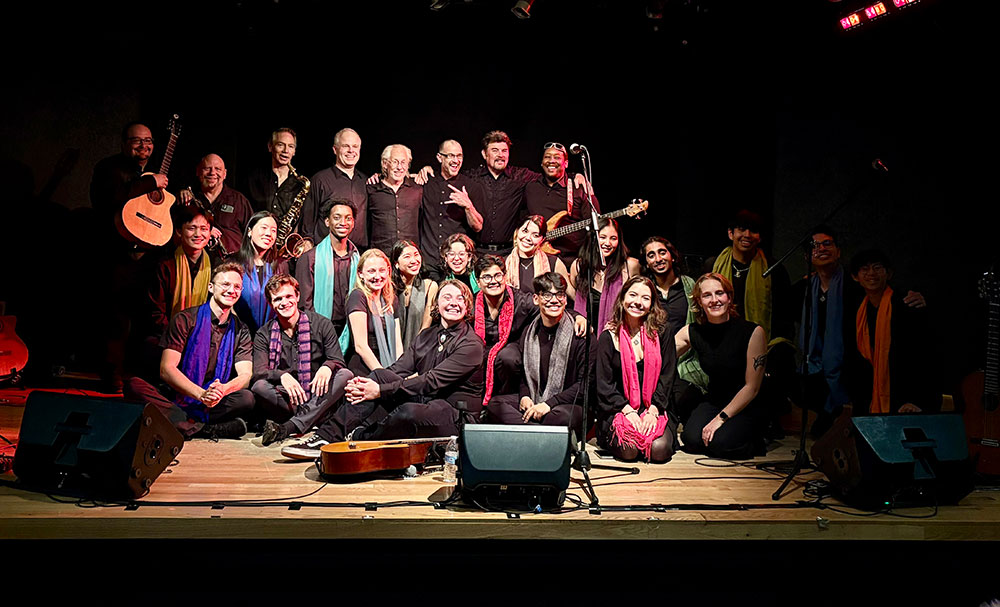 ¡Cosntelaciones! An evening of stories through song in O’ga P’ogeh. Back row from right to left: Michael Burt, David Manzanares, Michael Manzanares, Mark Clark, Andy Kingston, Kanoa Kaluhiwa, Chief Sánchez, and Rubén Domínguez. Middle and front rows include Maximiño and members from Stanford Talisman 2024-2025. Image credit: Manzanares Family Archives “Then flash forward to this year, and one of my dear friends and fellow alum from the group reached out and let me know that the current group was going to come to New Mexico for their tour this year. So my family and I helped them coordinate their lodging and their itinerary. They stayed and performed in Santa Fe and Ghost Ranch. They also did an assembly at the elementary school in Abiquiú and shared some music in the Pueblo –– to me, it felt that everything came full circle. This coalescence of my upbringing, my family, my time at Stanford, my time with Talisman, and my time in the Pueblo, they all coalesced and got woven together.” Maximiño is such a good storyteller, I could have listened to them for hours. Here is another one: “I mentioned earlier that my Grandma Ellie would tell my Dad, ‘If you can dream it, you can be it!’ From my Grandma’s saying, my Dad and Mom co-created and co-cultivated the idea of dreamseeds.” “Just like we have seeds that we plant in the garden,” Maximiño continued, “so, too, do we have the seeds of our dreams that we can plant out into the world, and they each need their own tending in order to grow and ultimately come true. Of my dreamseeds, I have two in particular that I would like to share right now––one for El Pueblo de Abiquiú, and the other for the world as a whole. My dreamseed for the Pueblo is that our people, both individually and collectively, will do everything we can to learn as much as we can about who we are, about our truths, and about where we come from. It's from these truths that we can have a strong foundation and be the best relatives that we can be, not only to one another in the Pueblo but also to all our relatives in the greater Abiquiú community, and all of our relatives in the whole world!” What Maximiño next told me made me happy. Maybe there is hope, after all. “My family and I are vehemently against all forms of oppression. I'm thinking of our relatives in Palestine and in the Democratic Republic of Congo and in Sudan, and of all the people who are facing colonization and ethnic cleansing and genocide… So my dreamseed for the whole world is the liberation of all colonized and oppressed peoples and for me to do everything that I possibly can to help realize this collective dream.” “My Grandfather would say (and my Dad continues to say) that every day we give thanks for the Breath of Life. I want to become so fiercely intentional such that I live and act each day knowing that every breath I take is not just mine. With every breath that we’re given, may we all come to understand the next right things to do, and may we then do them, even when they are scary, uncomfortable, or new. “May I become more grounded in my body. What is my whole body feeling? What is it receiving? What is it giving, and how does it fit into this beautiful, intricate, infinite multiversal web that we're all a part of?” Important questions indeed, worthy of contemplation, and somehow surprising to come from a young person. More wisdom and less Ego – that’s what I usually expect from older people, and often I’m disappointed. To meet somebody who isn’t preoccupied with their own success, who doesn’t dream of becoming famous but of serving their community – this doesn’t happen all that often. And yet, I’m not surprised to find such a person in Abiquiú, which has plenty of unconventional, community-oriented people.
We will continue this conversation at a future time; I’d like to learn more about the traditional Matachine dances, and Maximiño will consult with the elders who have made their revival in Abiquiú possible about what can be shared, as well as the most respectful and considerate way to share these stories. And I definitely want to hear more stories from Maximiño’s abuelitos. It was such a pleasure to listen. I know you have many commitments, Maximiño, and I’m grateful for the time you gave me. May all the flowers keep blooming for you! Interview with Ghost Ranch CEO David Evans By Jessica Rath Countless visitors from all over the United States come to Ghost Ranch every year, either to spend a few weeks during the summer, staying at a cabin and participating in one of the many programs offered, or for a day of outdoors adventure when they’re driving by on Hwy 84. For many of us who live in or around Abiquiú, Ghost Ranch evokes recollections of exceptional hikes. I’ll never forget the first time I made it to the top of Kitchen Mesa, all by myself, and the exhilarating views that took my breath away. I could see my minuscule car in the parking lot, an impressive testimony for the height I had climbed. It’s a region of glorious beauty which has captivated young and old for many years. Now imagine that you spent many joyful summers as a kid at Ghost Ranch, and you return as an adult lots of years later, to work there. Sounds amazing, doesn’t it! That’s what happened to David Evans, who started as Ghost Ranch’s new Chief Executive Officer in January 2024. He was kind enough to meet with me recently, when he told me about the long journey that brought him to Abiquiú. David grew up in Salina, Kansas. The first time he came to Ghost Ranch was when he was five years old and his mother taught a photography class here. And then he and his parents came every summer for years, sometimes they would drive here from Kansas, and sometimes they would take the train to Lamy. While his mother taught photography, his father took all sorts of different workshops. “So I grew up playing here every summer and had lots of wonderful first experiences here,” David told me. “The place has been really special to my whole family for years. My sister later worked on the college staff here. Professionally, my career has been in international relief and development, and so I lived in the Middle East for a long time.” How exciting! I asked David to tell me more. “I lived in Lebanon for a while, then in Iraq and in Jordan,” he continued. “I moved to Iraq in 2008 and I was there for about five years, and then I worked in Lebanon, and for a shorter stay in Jordan. I met my wife in Iraq, she's Scottish, and we were both doing aid work there.” I asked David to define what that entailed. What does it mean to do aid work? How did you help? “When we were in Iraq, the biggest program I worked on was designed to help Iraqis engage in local government,” he explained. “It was a program to help foster deeper engagement in the decisions that were affecting them through the government. It also supported local nonprofits, and then there were a number of different ways we would help people engage with their local leaders. Also, it involved delivering basic humanitarian needs, such as water, to different communities. We had a number of educational programs, programs to teach girls how to read, for example.” “Later, when I was in Lebanon, I had a regional position, and at that time, the Syrian war was in full swing,” David continued. “Lots of people were being driven across the border. And so the organization I worked with had operations in all the surrounding countries to help with refugees.” Now that the U.S. government stopped all support for overseas aid organizations, you must feel particularly bad because you were involved with some, I commented. “My wife and I both were just devastated, because the communities that we were working with desperately needed assistance. The result of years and years of effort was just wiped out. We all helped, and those communities will be suffering for sure,” David confirmed. That's really too sad. I didn’t want to dwell on this and asked whether he came back to the United States with his wife, after their time in the Middle East. “No, first we were in Southeast Asia for a while, for about five years,” David corrected. “We were in Myanmar, in Burma, and then Thailand. So we were working in Myanmar, and then after the coup, we had to leave in a hurry, and we moved to Thailand. Then we were working in Thailand, and I was eventually working for EarthRights International, a human rights and environmental defense organization. We lived in Chiang Mai, Thailand.” “We moved from Chiang Mai, Thailand back to the United States in January 2024, so a year and a half ago,” David continued. “I've got two boys, they're in second and fourth grade at Abiquiú Elementary. The move has been a big transition for them. Most of their memories are from Thailand and Myanmar!” What was different for them, I asked. “Well, I had to show them how to tie their shoes and wear jeans, for example,” David told me. “They were wearing flip flops and shorts their whole life.” I’m convinced that it's good for a young person to be exposed to many different cultures and languages and David confirmed that they're doing really well, playing basketball and soccer and things like that. Abiquiu Elementary is a lovely school, he said, so they're doing just great. And how did he end up at Ghost Ranch, I wanted to know. “When I was working in Thailand, the Chair of the search committee to fill this position emailed me out of the blue with this opportunity,” David told me. “He is a good friend of my mother, and I was very excited and applied for it. I really wanted this job, and when I got it we made the move back to the US.” And what does it entail to be the CEO of Ghost Ranch? What are your obligations and responsibilities, I asked. David’s answer was impressive. “Well, we're an education and conference center, and we offer wonderful programs in the arts, spirituality, and social justice. There are more than 100 rooms here, and we have guests all year round, but we're especially busy in the summer. We also offer a wonderful youth program, and part of that is a community camp for Rio Arriba County residents. In the summer we offer swimming lessons for kids who live around here. And we have a wonderful dining hall and a library. There are two different museums, an archeological museum and a paleontological museum. We have great hikes here. We've got a staff of about 55 people year round, and that goes up to 85 in the summer. We expand a lot in the summer in order to take care of all of our summer guests, and so my job is to oversee all of that.” He continued: “One of the main things we're doing right now is the construction of a large scale solar array. We'll be breaking ground with that soon, and then about 10% of our electricity will be solar. We're really excited about that. It's very important to us that we're good stewards of this land. For example, we're taking care of this field right out in front of us here.” David pointed to the big lot outside, in front of his office. “We got that ready to plant so that it's lovely and green soon. Taking care of our environment is top priority, and people learn that while they are here, that's just part of the whole experience.” My next question had to do with continuity and innovation. As the new CEO, what is his vision for the future? David mentioned a number of exciting ideas. “We're really committed to adding in more social justice work that helps us embody our values. We're an inclusive place. We care a lot about the sustainability of our land and our resources, and we feel that this is a place where people can gather a lot of strength from. We want to make sure that we give people ways to move that strength with them, into their own communities. That's been an important focus for us. And over the last few months we've been looking for new and better ways for people to experience the ranch. We're opening a café in about a week, and that'll be up in our headquarters building. Right now we have a wonderful food service, but it's only for overnight guests. With the café we'll have a place for day visitors to join us for lunch and coffee.” “What other changes can I talk about? We want to add new rooms, so we're embarking on a fundraising drive to build new rooms. We have more people who want to visit than we have rooms, and so that's an important project for us on the horizon. And we are really focused as a team on making sure that we're a very welcoming place for everyone. It's been a big, big focus of ours for the last year.” I asked about the flood in 2015, when heavy rains washed some of the buildings away. “We did a lot of work to restore that waterway,” David answered, “and we've trying to make sure that we've got the space to continue our primary classes. The classroom where we did our pottery classes was washed away, so we've been working to replace that.” Where does the funding for all this come from, I wanted to know. Is Ghost Ranch an independent organization, I asked. David explained: “The Presbyterian Church owns the land that we're on, and the National Ghost Ranch Foundation runs all of our programs. It's independent, but has a really strong and close working relationship with the Presbyterian Church. They have seats on our board and are the land owners. They're wonderful landlords and it's a very close collaboration, although the National Ghost Ranch Foundation is independent.” “We really appreciate and respect our Presbyterian roots and values. We want to maintain alignment with those values because those are our values as well. We want to make sure we're looking for ways to bring those values to life. We are open to everyone. We want to be a place for everyone.” Ever since my first hikes at Ghost Ranch in 2001 I’ve been impressed by the generosity of the Presbyterian Church to allow people free access to their land. There were no “Private Property” signs, no fences. This is so kind. There is Chimney Rock, Box Canyon, and Kitchen Mesa. Have you added any new hikes, I wanted to know. “Yes, we have the Piedra Lumbre Trail, out in the Painted Desert, which is beautiful. And then we have a great trail called ‘On a Lark Trail’ and the ‘Matrimonial Trail’. So those are some wonderful hikes that we have. All the trails you mentioned are on forest service land, we've got a really good collaboration with Carson National Forest who work on those trails, together with an AmeriCorps team. We just restored a significant portion of the Chimney Rock Trail.” When I was driving north on Hwy 84 to Ghost Ranch, looking at the gorgeous rock formations, I started musing. They look so static, always the same. But they do change too over the many thousands of years, we just don’t notice it. Do you have classes about geology, I asked. David responded: “Yeah, we do. We have some great guided hikes that focus on teaching people about the geology of the area.” “We invite all of our neighbors from Rio Arriba County to come and visit,” David added. “We have a daily use fee, but Rio Arriba County residents don't have to pay. I want to make sure that everyone knows that we’re open to all, and I'd love to have all our neighbors come visit, check out our hikes, and join us. We like for people to sign in when they use the trails, just in case there's an emergency, but people are free to use the trails.” How many people come to visit in the summer, I asked David. “We had about 8,000 visitors so far. We often have over 20,000 day visitors a year,” I learned. “We now have programs year round. It's a really cozy place in the winter, and we’re working on expanding our year round offerings.” “Most recently, we had programs in the middle of January, and those are mostly art focused. It’s really a lovely time to be here. And then we host the Blossoms and Bones concert in September, so that'll be in the Fall, it's a three-day Music Festival. (Please click the link above for more info.) Also, David wanted to make sure people know about the Summer community camps for kids, one in June and one in July (again, check out the links for more info, low cost for Rio Arriba residents). And they offer swimming lessons this summer, where kids learn to swim – he learned to swim here, David told me. No more foreign travel for him and his family – he loves being back, and I bet that’s great for Ghost Ranch in terms of stability and continuity. David is very busy, and I’m grateful he took the time to talk to me. Make sure you visit Ghost Ranch this summer, and bring the kids! Interview with sculptor and painter Kathie Lostetter By Jessica Rath Compared to busy Abiquiú, Barranco is pleasantly sleepy and, yes, one could say dreamy. Everything proceeds at a slow pace; except for the paved road, things look much like they did 50 years ago, one could imagine. The perfect setting for an artist who has an intuitive connection to everything around her, animals, trees, birds, plants… I remembered Kathie Lostetter from many years ago when I participated in the Abiquiú Studio Tour and she was the board president or whatever she was called then. She kindly agreed to an interview for the Abiquiú News, which gave me the chance to learn more about her and her art. Kathie grew up in New Jersey where she lived until she went to college in Florida, at the University of Miami. Her family lived near Newark, New Jersey, and then they moved to a lake in Sparta. Because of that, she has many happy memories of her childhood spending the summers in nature, swimming, running around through open fields, meeting wild animals. After she finished her university studies Kathie stayed in Florida for a number of years and then moved to Michigan where she met Al, her husband, who was teaching art there. That was in 1975, just at the time when he was headed to New Mexico. She decided to meet him there, after she had packed up her things and closed that chapter of her life. “He bought this place where we're right now, in 1975,” Kathie explained. “Since then we've added but the main core of it was a ruined adobe. And then we restored the ruin of the Torreon [tower] of the village, which was just a piece of wall. We rebuilt it, and that's where my husband’s studio is now. When we started with the Studio Tour we had lots of people who stopped by, and it was a really nice place to have both of our artwork at the Tour.” She continued: “I studied art when I was in college. I studied mass media and art, and my idea was to do animation in film but ended up doing sculptures in clay that are somewhat animated. When in college I did some work in clay and I realized I liked hand building, but I didn’t go too far with it then. After I had moved out here to Barranco, we built all of this. Al and I rebuilt the adobe buildings and then when our sons were bigger, they helped us too. So we started with our home where we’re right now, then we built a bird house for macaws, and then we rebuilt the torreon. And then there was another ruin which we eventually bought and restored. Owen, one of our sons, was living there for a while.” “When we moved here, we knew we wanted to build passive solar. So then we slowly built this over time, and in the meanwhile I got a job teaching at Head Start, because our little boy was in the program. At first I was the assistant and then I became the teacher. I did that for about eight years.” But what inspired her to create these beautiful, mythical creatures, I wanted to know. “Well, after living here for a while, I wanted to do my artwork again,” Kathie told me. “When I wasn't working, I was interested in folk tales and things like anthropology and petroglyphs and so on.” “In the midst of that time I had a dream about an eagle. It was a skeleton covered with something like a buffalo robe. It was really scary! You can imagine, if you see a skeleton in your dream, it's pretty scary. But then it changed into a bald eagle. And so this being with the robe became my first sculpture. It was the Eagle in the Buffalo Robe.” Kathie went on: “It became this anthropomorphic thing. When I studied art in college I looked at modern art and I tried to connect to that world, even tried to do art like that. But I guess that I just had to find it myself with the animals. And so that’s what emerged, an anthropomorphic look at animals. The next one I think I did was a bear. So I had the eagle and the bear. And then I started doing any animal – this year, I did three belugas, not together, but three separate pieces of belugas. My granddaughter was so in love with belugas, so I made her one for her birthday. It's such an unusual animal to put in a robe that when I studied it, to sculpt the animal for her, I decided to do one for the gallery as well.” What exactly do you mean when you say anthropomorphic, I asked Kathie. Do you mean that an animal is kind of equal to a human being? She emphatically agreed. “Yes, they are standing like a human being. If you look at Egyptian art, you see for example the head of the Jackal on the body of a man. I just got fixated on portraying animals that way, and it may seem strange but I just proceeded with it.” I strongly relate to that. Many humans, and especially science, treat animals as inferior, when we’re actually all connected. Of course, we humans have more advanced intellectual faculties, but babies don't have them either, and yet we don't treat them badly just because they cannot put one plus one together. Again, Kathie agreed that she has a similar view. “When you look at ancient art, you realize that they had animal teachers, and that they were given priority over images of humans. Some of them were in the wild, like the painting of a horse running in the caves of Lascaux for example. But then, very early on, they mixed the attributes. I think there's one that's 30,000 years old of a lion man. The head is the lion, and the body is a man. And so that is just what came from inside me. It kind of worked for me. And then I expanded on it, and I was affected by what people liked, and that influenced me. But my sculptures are always about the fact that it is a sacred animal.” I had seen some of Kathie’s sculptures but I never really understood what they were about. Her explanation makes a lot of sense and I feel I'm on the same page with her artistic vision. My next questions: how do you promote your art and display it in galleries, and also: I wanted to know more about the Studio Tour, because Kathie was one of the first artists who actually started it, if I remember correctly. “So maybe let's start with that,” Kathie answered. “I was with the Abiquiú Studio Tour for twenty years. I started showing at a gallery in Santa Fe 35 years ago with just a couple of pieces like a coyote and a bear and now show at The San Francisco Street Gallery. And then Lori and Richard Bock started the Studio Tour, we joined and were so amazed how many people came all the way out here to see our work. And actually, I had some pieces at the Abiquiú Inn pretty far back.” “My smaller pieces go there, and my larger ones are going to Santa Fe to the gallery. And so, yes, we were excited about the tour, both for me and for my husband who is a painter. We set up a place where people could come and visit in the round building, the torreon. The Studio Tour was great for us. For many years I was the chairperson. In the beginning the whole idea was to keep it going, because I knew it was so good for all the local artists. For some of them it was the main avenue to sell their art.” “It was great for people of all levels, artists who are in a gallery and others who were just starting out. It was and is for all different types of art. The tour has been a wonderful thing, and the only reason I quit was because my work takes so long to do. Once this gallery I was in moved to a better location, I just couldn't have any more work, I couldn't keep up with what they wanted. This became too stressful, plus, at the same time, I was a tour guide at the O'Keeffe House for seventeen years, so I also had a job.” Kathie continued: “And so, it all added up: there were not enough hours in the day, and people would come up to visit. They love it up here, Barranco is sort of different, you know!” At the beginning of the Studio Tour, how many artists did you have, I enquired. “It may have been about twenty in the beginning, something like that,” Kathie told me. “Maybe even less for the very first tour. Somehow the number twenty four comes to mind, but it was quite small.” She continued: “The tour became rather successful, because different people would step up to help keep it going. You know, that was always the hard part, to get people to help run it. Sometimes we met at the Abiquiú Inn, and once we met outside the Parish Hall of the Church, and we had our meeting outside in the Plaza. And then the Clinic was a good meeting place for a while, we got a room there to have our meetings. So it really turned out great. I've still been with it since the Event Center became the place to have the meetings, and that was a really great place for meetings. I totally think it's wonderful. And over here, Tamara is still showing at Nest, and you see the people really showing up.” And did you place your pieces in galleries, I wanted to know. How did that develop? Kathie’s answer was a bit shocking. “I was in this one gallery in Santa Fe for about eight to ten years, but then it burned down and I lost a lot of my work in the fire. They weren't even insured. Just last night I looked at the article from when it burned. It showed one of my sculptures. I had a piece that was just laying there, with the firemen behind it, because when they hosed everything down, all the pieces broke. One white deer survived because it was in the back room. The gallery that burned down was on Canyon Road. But then I went to another gallery which accepted me.” Next, Kathie showed me around her home and studio, which was filled with many of her standing animal pieces: owls, deer, a leopard, a bear. Many of them were mothers with a tiny baby safely tucked into the enveloping robe. She explained the process of creating her sculptures, using the unfinished piece below: After it’s built by hand in clay, Kathie fires the sculpture in her kiln. Next, it will be painted with oil, which gives the piece its luminosity and vibrancy. She then uses feathers, semi-precious stones, beads, twigs, pieces of leather, and other objects to give each sculpture its stunning personality which has so much warmth but also majesty. Her creations are both playful and awe-inspiring, emanating a deep love for and understanding of the animal depicted. Each one touches within the viewer feelings which all creatures share, and evokes an eternal wisdom which humans can only hope to attain. Thank you, Kathie, for taking the time to share your beautiful art with the Abiquiú News’ readership.
Interview with Katherine Eagleson, founder of Abiquiú Lake Amigos. By Jessica Rath When you think of a beautiful lake, what comes to mind first? I bet it’s swimming, maybe kayaking, or sailboarding, or some other recreational water activities. That’s the image most of us would conjure up. However, a lake has a lot more to offer to those who are interested: the birds and the insects one can see, the water quality, or checking boats for invasive species. Abiquiú Lake Amigos, a group with about twelve dedicated members, concerns itself with these more scientific projects. Katherine Eagleson formally started the group in 2023. She was kind enough to meet with me and explain what they do, and also, how she got into this: she’s a biologist who grew up in Iowa but has lived in northern New Mexico for 35 years. From around 2011 onward she did volunteer work for the Army Corps of Engineers, and when she retired, she started the Amigos group to continue with the survey of the water quality. They added bird surveys on the lake and down the Chama River for three miles below the dam, and also began to do pollinator studies: bees and butterflies. “Butterflies are the easiest to identify,” Katherine continued. “Generally, bees are hard to identify, but they're very important pollinators. Pollinators in the United States have decreased by 45% and when such a large part of a population is declining, it affects the birds that are insectivores. It’s definitely going to have some impact on warblers and fly catchers, and we are monitoring both of those.” The decline in abundance and diversity of insect pollinators due to habitat loss, pesticide use, climate change, and other factors has been observed worldwide. Bird populations in the U.S. are declining too at an alarming rate, and bird watching/surveying is a critical part of recovery efforts, according to this Audubon article. “There’a a book about where to find birds in New Mexico,” Katherine told me. “The last version I had basically said, don't bother with Abiquiú Lake. There's nothing happening there. This was some years ago, but it’s wrong, because the lake is part of an important migratory route. The birds that we see in April on the lake are migrant birds. We even had a loon last year. It's an important stopover, and that's becoming more and more important in people's consciousness. It's not so much about what birds are here right now, but where they're going. Are we part of that journey? And if we're part of that journey, then we have to make sure that these animals, the birds, the insects, mammals, the reptiles, that they have a place of refuge and can fuel up for the next stage. Every step of the way is important, not just where they breed and not just where they winter. But every step along one way is a continuation of their journey.” “We have three kestrel boxes. Kestrels have declined 45%, nearly half of kestrels have been lost in the United States, and it's probably their nest sites. They're cavity nesters. So we've put up some nest boxes, and we're monitoring those. We put up boxes for Juniper tit mice, because they're also cavity nesters. That work is important. You know the old adage, ‘Think globally and work locally.’ ‘What can I do in my backyard?’ Because we're one of the steps in the birds’ journey.” I love this idea. For the Amigos the Abiquiú Lake isn’t an independent, isolated location but one step in the journey back and forth. It’s part of a larger, dynamic picture. Katherine illustrated this wider view with an example: “We don't have very many nesting bald eagles in New Mexico, but we have a lot of bald eagles that migrate into Mexico in the winter time. So we keep track of that. How many are coming in, how many are staying, does the lake level have anything to do with how many eagles we have? Does the icing level have anything to do with the number of eagles we have? And now we have quite a bit of data, because we've been doing this for quite a number of years.” When did you start, I wanted to know. “I think I started in 2011 with the Army Corps of Engineers,” Katherine replied. “I started with a few of my friends here, and they have friends; they're all outdoor people, and they've become interested. And some of them, a couple, Ann and Willie, are really good birders, and Susan's really getting up to speed on water quality. We have some new members who are interested in various aspects of it. So, we're not out trying to get a hundred people in the group. We're trying to get a cadre of people who are really interested in participating on a regular and sustained basis because that's how you can collect data. We started with about six, and at the last meeting we had maybe twelve, so it is growing.” “We have ten stops along the Chama River where we do a bird count every month,” Katherine added. “Now we will do them almost every week for the next three months, because it’s breeding season. We have all kinds of warblers and fly catchers coming in. We have migrants going across. I saw an osprey yesterday moving through. So we have set times, but we also say, if you're out there and you happen to see something, or if you can’t do all ten but you do the first four stops, send me your data. Because, you know, I'm not interested in keeping the data from a certain date, but we want to know what's moving through here, what's nesting here? What bird has successful nests? That's the data we want. Anybody can go out and send me their data once they learn what we're doing.” How often do you have meetings, I wanted to know. “On average, we have about six meetings a year,” Katherine answered. “We have more right now, because we will be working with the Army Corps of Engineers on Earth Day for the Earth Day activities. A couple of times a year they have activities at the lake that we help with. We built the titmouse boxes last fall on the Public Lands Day, and we put them up this spring. A number of activities are planned for this year’s Earth Day celebration.” “We're also going to help with checking boats for invasive species, the quagga mussels and zebra mussels. They're very short staffed at the lake. The Army Corps of Engineers is making a great effort up there. They care about the environment, they care about their impact, and they want to engage the public.” Next, I asked Katherine about the poisonous blue green algae. I remember reading the warnings, especially for young children and dogs, because the water can become highly toxic. Katherine corrected me by stating that we’re talking about cyanobacteria, not algae, and that almost every lake gets them at a certain temperature. But when they reach a certain level they can become toxic. Cyanobacteria are not toxic at every level, Katherine explained. When they start to die, they deplete the oxygen level in the water, and that’s when they can become fatal for birds and mammals. Warming temperatures cause those blooms to happen. “Pretty much every pond water in the southern United States is going to have cyanobacteria. But how much circulation is there? How much fresh water is coming into the lake, what is the temperature of the lake, all those things can have an impact.” “The Army Corps of Engineers has a pretty robust water quality testing process now, it collects samples, checks for oxygen, checks for turbidity, checks for conductivity. And they collect samples to check for invasive species, mainly the quagga mussels and zebra mussels. Because they're microscopic when they come in, you have to collect the samples and send them in. You can't see them at that early stage. When we check the boats we're not looking for mussels. What we're looking for is, is there standing water, and has this boat come from a place where those mussels are prevalent. New Mexico doesn’t have them, but they’re in every state around us, Texas has them, Colorado has them, Utah has them.” What do they do, I asked. “They completely clog up everything,” was Katherine’s answer. “They’re highly invasive on other species and you can't get rid of them. You really can't get rid of them.” “Right now we're meeting every month because we're setting up a whole summer schedule,” Katherine added. “Everybody's doing everything at this point.” Earlier, she had mentioned an osprey platform. I was curious: what’s that? “Many years ago, I was there when the Army Corps of Engineers put up an osprey platform, like they had up at Heron Lake,” Katherine told me. “It's a very tall pole with a platform on the top where ospreys can build their nests. But no osprey has ever used it, I think it's too barren. Maybe they don't know what it's for. But I have often seen a bald eagle perched up there, and some other birds. As I said, there was a bald eagle yesterday when I needed to check the Kestrel box. There was a bald eagle sitting right on top of the osprey nest box. The ospreys come up here for the summer from further south, from the Gulf of Mexico and from below Mexico. They come up here in the summer to breed along the lakes where they can fish, because they are obligate fish eaters. So they breed, have their little chicks, and then they fly again. They can't fish here in the winter because it's frozen,” The eagles stay here for the winter, but where are they in the summer, I asked. “Well, these days bald eagles are almost everywhere,” Katherine told me. “They were an endangered species till 2007 because of DDT and some other impacts. They were seriously endangered, along with peregrine falcons and a number of other birds. But they've recovered marvelously, and now they're all over the place. But they will be here mostly in the winter, and in the summer they will be further north from here, up in Canada and Alaska. But Colorado has nesting pairs, and we have a few nesting pairs here, but not too many.” “At different times in the year we have different numbers of birds. In the winter we have a lot of waterfowl. We'll go down to the river in January and get 26 different species of birds, and maybe eight or nine or more species of waterfowl. In the summer and in the spring we're trading waterfowl for warblers and fly catchers, and the birds that are coming in to nest. Things will really be popping in the next two months.” So over the years that you've been doing this, did you see any kind of fluctuation in the numbers, I asked. “The lake habitat is difficult because the lake level varies so dramatically. A couple of years ago when it was unprecedentedly high, birding was just so much fun because there was so much habitat. But it fluctuates very much. For instance: the grebes build these mats along the shores to nest. When the lake level frequently goes up and down, those mats can't survive, and so we have many fewer grebes. The river fluctuates a great deal too, but the habitat has improved so much in the last 30 years. From being a straight sort of ditch that didn't have willows and didn't have salt brush and other growth it has changed dramatically. A few years ago they put in some structures to help slow the water down in certain places, so it didn't just rush through. It slowed the water down, so more water moved to the side, and you have little wetlands. There are more amphibians down there, and frogs start croaking. I heard them just the other day. And there are a lot more willows now, just a great variety of vegetation. So we're going to get more insects, and we'll get more birds, and it's just just greatly improved. We have river otters there now. They've migrated up and they're actually nesting there.” So we talked about the birds and the water quality, but what about the pollinators, how do you count them, I asked. DO you count them? How many butterflies? How many bees? Katherine explained: “We probably won't get to the species of bees, that's pretty hard, but we can get the family possibly.The important thing is not only what bee do you see, what butterfly do you see, but what plant are they on? Some adult butterflies may be nectar feeders and and visit a lot of different plants, but most butterflies are very specific about where they will lay their eggs, and that will be important. Do we have the plants so that they can multiply?” “The monarchs, famously, lay their eggs on milkweed because that’s what the caterpillars will feed on. Many other butterflies are just as specific. Just mallow plants or aster family plants or mint, because the caterpillars are very specific.” The Army Corps of Engineers has started a pollinator garden in the campground, and the Abiquiú Lake Amigos are helping with that. Katherine clarified: “We do some cross referencing, what butterflies are we likely to see in a grassland kind of area, because that's what it is up there? What native plants can we plant there to attract them? One of the activities this Sunday will be to work on a pollinator garden.” “We want to get really good with these two groups, the Lepidoptera (butterflies, moths) and Hymenoptera (bees, wasps, etc.). Then we can spread out into Coleoptera (beetles), and there's a lot of interest in lightning bugs – fireflies. It's only a couple of weeks that you'll see them up at the lake, and there's one place in particular at the river where I find them and we want to monitor them as well, because they’re also in decline.”
I remember the time when I lived near the river. There were two weeks in June when the fireflies would provide an absolutely magical spectacle at night: like tiny, sparkling stars, they would blink around the bushes close to the water. I’m so grateful that there are people who are concerned about these fascinating insects and try to preserve them. Actually, everything Katherine and her Abiquiú Lake Amigos do is immensely important and may help to stop the further decline of all these creatures which not only deserve to live in peace but also play a significant role in humanity’s food security. Thank you, Katherine, for sharing this meaningful endeavor with the Abiquiú News. Maybe you remember that I wrote an article about the Mosque near Plaza Blanca, built by the famous Egyptian architect Hassan Fathy. Fatima van Hattum who had kindly guided me around the compound of the Dar Al Islam educational center which was built around the mosque, had mentioned that the board and the organization’s governance was going through some major changes. The plan was to have greater community involvement, to offer a space for Muslims and Non-Muslims, to re-vitalize the whole area, in fact. This sounded quite exciting, and I was curious to learn which steps into the new direction had been taken, if any. I got in touch with Rafaat Ludin, the newly appointed Executive Director of Dar al Islam, and he agreed to meet with me and answer some questions. Imagine my surprise when he spotted my German accent right away and talked to me in absolutely flawless and fluent German! Rafaat’s past is so fascinating that I’ll have to share it here. Rafaat was born in Afghanistan and was about 12 years old when he left the country in 1977. His father was appointed ambassador to West Germany and they went to Bonn, West-Germany’s capital. When the communist coup d'etat happened in Afghanistan in 1978, his father resigned from his post and the family stayed for less than a year in Munich. From there, they drove by car to Saudi Arabia – how exciting that must have been for a young boy! They stayed there for about six years, and then Rafaat came back to finish school in Germany and to go to university. He studied electrical engineering in Darmstadt, specializing in power engineering. Then he joined the German Agency for International Cooperation. That’s how his travels started, both for work but also privately. “In 2000, my family and I moved to California from Germany. After about four and a half years we moved to Denver, Colorado. That was the first time I encountered Dar al Islam, in 2004. There was a retreat that September, on Labor Day weekend, and we fell in love immediately with this place. We have been coming back ever since. My children spent most of the critical years, their teenage years, coming down here. We stayed at the dorms, or we stayed at the West House right here. So, I was very familiar with the organization, but only as a retreat participant”. Rafaat continued: “I had my own business, several businesses in fact, but in 2021 I decided that I had enough and didn't want to work in the business world anymore. And last year the Board of Trustees of Dar al Islam organized a retreat to develop a new strategy for the organization. They decided on three things:
When Rafaat learned of this opportunity from a friend, he applied for the position. He was one of nine others, but the board decided that he would be the right person for this responsibility. And now he is the executive director. “I call it the modern era”, Rafaat explained. “We are going back to the community concept, not only about Muslim community, but also the outside community, the interaction with Abiquiú, with northern New Mexico. We have a facilities manager who's from Abiquiú, his name is Fidel Serrano. We have about seven people on the facilities management team. And we just hired a program director, he’s called the Director of Education and Campus Programming. He's coming from Michigan and has a PhD in Islamic Studies from Princeton University. He's going to be moving here with his family, and they'll be living in the West House. And then we have hired an office manager who also is local; she will start working next week. We also have a person who takes care of the finance issues, who lives on County Road 155. So that is the team we have put together to achieve the objectives that the board has set for us”. This sounds really exciting to me. I asked Rafaat about their plans, how to engage the community and how to be more visible in the community? “The program that we have developed has five significant components. Fitra is an Arabic concept that means ‘natural inclination or innate condition that you are born with’. It is derived from the Quran. We Muslims believe that every person is born with a natural tendency to seek his or her God, and to be connected to the Earth,” Rafaat went on. “In the Islamic context, every child is born as a Muslim. That means, this child has surrendered to the will of God. That's the meaning of “Muslim”: Surrendering to the Will of God. How we are brought up by our families makes us whatever we become: either an atheist, or Hindu, or Muslim, or Catholic, or Christian, or Jew, or Buddhist”. “As we grow older, as we grow up, we decide how we want to live. And then we are held responsible for our actions. When you're born you are in darkness, and then you are brought out of that darkness into light. So how do you get out of that darkness into light? Through knowledge, through understanding, and through spiritual connection that you develop.” “So there are these five different program components: there is service, then there is companionship and mentorship, then land based education, then creative arts, and unlettered nation. These have special specific meanings. The first part, which is a spirit of service, is a religious life that deals with Muslims. Doing regular prayers in the mosque and the Friday Sermons will bring this mosque and the facility back to life. In the last few years this has been abandoned most of the time, except during retreats”. “And then there is the other component: a ‘good neighbor’ program. We’ll be opening our campus to the local community, non Muslim, as well as Muslims, and by building interfaith partnerships with other organizations. For example, we have had some conversations with the Abiquiú Library. We hope to connect our library with theirs, so that all the people who go to the Abiquiú Library have access to all the books that we have, and vice versa”. “Also, we have initiated conversations with Ghost Ranch to do programs together, and we will communicate with other religious and non religious organizations in the area”. “The second component of our program is mentorship. It is basically for people who have recently converted to Islam, but they don't really have a deep understanding of the lifestyle. They come in for a week-long program from throughout the country. And then they develop a better understanding of how to live their religion, and then we will have people who will move on to Level Two. They will come here for 40 days and then do two or three more intensive programs. Some will go to Level Three, where they will come and stay here for a whole year.” “The land based education program is about cultivating stewardship. According to Islamic understanding humans are here on Earth to serve as God's representatives and to take care of this earth on behalf of God. With that assignment there has to be a sense of stewardship towards this earth, taking responsibility for it. So, environmentalism, making sure that natural habitats won’t be destroyed, is essential. This is why we are taking so much care of Plaza Blanca, because this is God's gift. And it's our responsibility to ensure that it remains an asset for everybody, for many decades to come”. “For example, we will develop a Plaza Blanca trail system. And we will establish a permaculture site here. We will probably do beekeeping activities here. Right now we are in the process of developing a master plan for the use of the land. Once we have the master plan, we can decide which areas are suitable for different activities: where to do permaculture, where to create recreational and sports facilities that will not only serve those who will come for retreats and for the programs, but also the people of Abiquiú. For example, we have a soccer field here that we have recently built, we have volleyball courts, we're building a basketball court, we will have archery and outdoor fitness studios, and that's for everybody. So, those are some of the things that we want to do, that are part of land-based education”. “We will invite people to come in and use their time and effort to learn not only how to take care of the land, but also how to take care of it with a conscious understanding of why they're doing it. So, it becomes a spiritual activity, not just a physical activity”. “Our goal is not to be missionaries and try to convert people, our goal is to give back what we have been receiving for so many years. So the sense of our engagement is based on mutual respect, and mutual appreciation. We are focusing on the fact that the differences between us are small, but the similarities are huge. If we focus on the sense of what brings us all together, then it becomes irrelevant what belief system everybody has, because we are working together to achieve peace.” . “There's a verse in the Quran that says, ‘There is no compulsion in religion, you cannot force anybody to believe in a certain way’. The connection that you have with your nature, with your God, or whatever you consider to be relevant, is yours. That has nothing to do with me, I cannot ever impose my views system on you. Maybe I will force you to say what I want. But I will never be able to force your heart. So why even try?” This is such an advanced point of view, unfortunately not often found in the context of organized religion. It teaches us never to look at groups, whether “Christians”, or “Muslims”, or “billionaires”, or “white people”, but at individuals and their actions. Some people strive to be good, and others are misguided and do horrible things. The “Us versus Them” mentality identifies with one tribe that is good, which automatically makes another tribe bad. It’s about time we learn to grow out of such thinking. Rafaat continues: “The point that I'm trying to make here is, I'm not going to look at what is different between us, I'm going to look at what is similar between us, and then build on that. So that means I will respect you just as much as you respect me. And just as much as we both respect that Catholic or Protestant or Hindu or Buddhist or somebody else”. Next, Rafaat explained the other program component: creative arts. “Working with hands to unlock the heart. That's the essence of it. Because, you know, even art is a spiritual activity. There'll be year-round workshops with local artisans and nationally recognized masters, American Muslims and indigenous American art forms, cultural history to promote Islamic art like calligraphy and geometric forms. For example, this year we have several retreats that are focused around arts. ’Art of Pattern’ – this is about Islamic art and we have a retreat around that. And then we're also hosting the Abiquiú Studio Tour here. We have about eight or nine artists who have already registered, also non Muslim artists who will display their work here. Also, we want to open up the opportunity for Abiquiú artists to sell their art here. We have hundreds of people coming to the retreats and most of these people who come in have enough income so that they can spend money on local art. Abiquiú has a very large artist community, and we will give them the opportunity to come in here and be part of this process”. Now we get to the fifth component of the program, and Rafaat explains what “unlettered nation” means. “It is an Islamic concept. The Prophet Muhammad was illiterate. He couldn't read or write. Most of the Arabic language was more of a verbal, an oral language, and not so much a written language. So the essence of Arabic as a written language started with Islam. For centuries, and for millennia before that, there were gifted poets and storytellers, but nothing was written down. We have no Arabic literature that goes before the time of the Prophet Muhammad. So storytelling, for example, will be an important aspect of our program. There are so many stories that people can tell, whether it's from Native Americans, or from the locals here, or from the Muslims. So that would be an important component of our scholarly working groups. Not only telling stories, but also training people in how to tell stories and how to write stories. And then we will develop the media to transmit what we come up with. Our new website will combine with social media campaigns and with other mediums available to us, including developing documentaries around different topics. And we’ll create webinars that will be broadcast globally. This will all be part and parcel of this unlettered nation, as a process of thought leadership. That's the vision of our board: that Dar Al Islam, by virtue of its location, by virtue of its facilities, and because of the good endowment it has, has incredible potential. It has been completely underutilized in the past. This is why we were putting together a team of young, energetic, knowledgeable, well educated, highly motivated people who will come here and then take it further to make it blossom”. “We learned recently that we qualify to get Dar Al Islam inducted into the register of National Historic Places. Last week we submitted our official application for that. Now, the requirement is that the facilities and buildings have to be at least 50 years old. We are about six years shy of 50 years. But our building is so unique, and it will be the only mosque, and an active mosque, in the register of National Historic Monuments. So now we are moving in that direction”.
It's such a fantastic building, built by this famous architect who had all these innovative ideas. When I was reading about Hassan Fathy I was so impressed to learn that he was working for poor people. He didn't just want to be rich and famous. Rafaat agreed. “When he built and designed this facility he volunteered his time, he didn't get paid for it. This was one of his last projects, and the only building that he designed in the northern hemisphere, out of 186 projects he completed”. I hope their application will be accepted, and my warm thanks to Rafaat for a really inspiring conversation. The plans for Dar al Islam point to a more harmonious and peaceful future and could stimulate other organizations to create similar programs. Something sorely needed. ed. By Jessica Rath Today, on April 19, the El Rito Library is showing the 2023 Oscar Winner for Best Documentary Feature Film, “Navalny”.* The film’s editor, Langdon Page, will be present to introduce it, because – guess what! – some of the editing happened right here, in La Madera. The film is being shown at Northern New Mexico College, El Rito Campus, Alumni Hall. Pot luck at 5:30, showing at 6:00PM. I had watched the documentary shortly after Alexei Navalny was murdered at Polar Wolf, the maximum security corrective colony in Siberia near the Arctic Circle. To say it was gut-wrenching and deeply moving is putting it mildly. I wanted to learn more about Langdon and his work, and he kindly agreed to talk to me. Knowing very little about film making, I was curious – how does one become a movie editor? Are there college courses one has to take, or are there any special schools to attend? Well, in Langdon’s case it was a very organic process. From an early age he was fascinated by movies, he had the “cinema bug”, as he told me. He’d watch films, read every book about movies that he could find, and spend every free minute learning about cinema and its many aspects. His brother had started a magazine in Chile together with some movie producers, and when he asked Langdon for help because of his obsession with movies, that’s what happened: Langdon joined his brother in Chile, and together, they produced a few magazine issues – until the funding ran out. By that time, Langdon had established some solid connections with the small film community in Chile in the mid-90s. “I started talking to some of the producers thereafter with an idea for making a little documentary about looking for dinosaur eggs in Argentina, and they thought it was a great idea”, Langdon told me. When he came back with the footage, they needed somebody to edit it, and Langdon bluffed his way into the job. The producers had just acquired a top of the line Avid video editing system, the first generation of digital nonlinear editing (I looked this up: while linear editing assembles a film from beginning to end, the new technology allows the editor to work on any video frame or digital video clip, no matter where it will eventually end up). Langdon had the background and courage to figure out this completely new technology, was hired, and completed a number of projects in Chile. A couple of years later, he moved to Los Angeles with his wife and their firstborn. For a while, he had to take any work that allowed him to support his family. “The first place that hired me was actually a cable channel called E! Entertainment Television”, Langdon continued. “They didn't care that I had made a series of films that had done very well in Chile, they just cared that I knew how to run an Avid – the editing computer. So then I spent a while doing really boring television work, which kept us afloat as a family, but also taught me how to work with deadlines and within the confines of an industry that depends a lot of time on deliverables and strict formatting rules”. “At the same time, I kept reaching out to independent producers, and ended up getting some films that were more interesting. And then people kept hiring me to edit even though I would be writing or producing or pitching ideas, but I kept getting hired as an editor. And so I ended up doing a lot of that for the last 25+ years”. I must confess that I’ve never really thought much about the editing process of a movie. When it comes to film-making, I know the names of directors and a few famous cinematographers, and that’s it – I don’t know any famous editors. That doesn’t seem fair. I’m a film buff, and the productions I enjoy most offer great acting, beautiful cinematography, and an intelligent, moving script – all seamlessly joined together into one immersive experience. Whether that’s done successfully or not depends largely on the editor, I think. Langdon’s words helped me to see this. He elaborated: “When it comes to the making of a film it is often a year or more of editorial work. And that’s a lot of emotional energy, it's a lot of passion. If you're committed to it and are serious about trying to actually make cinema out of it the sensibility of the editor is inherently going to be reflected in the final film”. Yes, this makes total sense, especially in relation to “Navalny”. How did he get involved with this project, I wanted to know. “It was right around the beginning of 2021. A producer that I had made four or five pictures with called me up and said, ‘we've got this thing, and I think you’d be great for it. It's confidential, nobody knows about it. We've got this very talented director who's got a lot of ideas; can you come and start working on it?’ The director and his crew were just starting to sort through the footage and see what they had. I often like projects to go through a phase before I come on board, so that the director can start to try out all sorts of different things and get an idea of what they want in their head, make all kinds of mistakes, whatever. And then I can come on board, and we can make a whole bunch of different mistakes. So that's how it played out: I came up from Santiago, Chile to Santa Fe and set up the cutting room in La Madera. I was editing from there for the first six weeks”. In La Madera? Of all the places? How did he end up in La Madera? Well, Langdon grew up in Denver, CO, but one of his grandmothers lived in Santa Fe, and throughout his childhood he spent much time there. In 1994 his father, his stepmother, and some of her family bought a piece of land near La Madera, and this has been the family home ever since. So that’s where he ended up doing much of the editing work, in secret, as he explained. Obviously Langdon needed the fastest internet he could get, and also some gear, such as an extra screen. His father suggested they ask the Bondys, because Brian has all this equipment. So Brian came over with a monitor and helped set everything up. Amazingly, the internet connection in La Madera, New Mexico is the fastest connection that Langdon has been able to get anywhere in the world – can you believe this! “Navalny was a really fascinating project. It brought together a team of really strong voices with different perspectives, and we wanted to have all of that emotional, mental, cinematic firepower in the room together while working on this really challenging story. It was obviously all being created in the shadow of heavy security risks. We were doing everything completely under the table, nobody even knew this project existed. At the time, Alexei was in prison, which added to the emotional pressure. We wanted to make the best film that it could be in the fastest amount of time, because we imagined and sincerely believed that the film would be in some ways a sort of life insurance policy for Alexei. The more the world and the international community and the general public were aware of Alexei’s situation, the harder it would be for Putin to have him disappear, knock him off. I think for a long time, that actually worked”. “The emotional stakes were incredibly high. There were lots of tears all the way through the edit. The director, Daniel Roher, had a very strong personal bond with Alexei and his family. He is a young guy and was really emotionally distraught throughout the course of the edit. There was a time when I was working late at night, and he was asleep on the couch. And, he said, he woke up and I was just sobbing. I had just watched a part of it, and it just left me in tears. We would hug and tell each other, we’ll get through it, and then we kept on working”. I asked Langdon whether he had met any members of Navalny’s family and inner circle. “Well, I never met Alexei, because it was filmed before I came on board the project. We launched the film at Sundance Film Festival in January 2022. And it had not been announced that the film even existed. So, when we shared it secretly with the programming committee, they invited us to be a part of Sundance. But they billed it as a secret screening, which was the first time they had ever done that at Sundance. And everybody was sort of confused -- what is this secret screening?, and all this”. “And then there was a COVID wave. It was kind of devastating for everybody because Sundance rightly decided to do another virtual Sundance that year. But there was concern that if they announced our project, adversarial forces could undermine the streaming capability of the festival for the first weekend and actually shut down all access to all the other films. That’s why they decided to continue to bill it as a secret screening through the first weekend. At the first weekend of the festival, all films that are premiering get at least one screening – that’s how Sundance works. And then over the course of the first week they start doing repeat screenings. So we would not announce the film until after the first weekend. They announced it on Monday morning, and tickets sold out immediately, and that evening, we did the premiere”. By this time I was spellbound, listening to Langdon. To hear that the making of it was just as suspenseful and moving as the documentary was simply astonishing. “That was the beginning of the next phase of the film”, he continued. “This was the whole roll-out, taking it on tour and going to different festivals. It was in the middle of a number of changes in CNN Films, the distributor, and the whole streaming landscape. So it ended up premiering on CNN in April or May of 2022. At the same time we were going around showing it at festivals over the course of that whole year and leading up toward the Oscars. So there were a number of occasions when I spent quite a bit of time with Dasha, Alexei’s daughter, and Yulia, his widow”. By this time of our conversation I was deeply moved, remembering Navalny’s untimely death. Dasha had lost her father. Yulia had lost her husband. But Langdon reminds us not to give in to despair: “Yes, it is very sad. But I think we should continually return to Alexei’s message at the end of the film, which is that we can't be complacent. The force used by the authorities to try to shut down any sort of democratic movement in Russia, is an indication of how strong that movement actually is. As we know from history, the only way to break through this is for the grassroots, the people on the frontlines to rise up. There's a lot of work being done. Most of the Anti Corruption Foundation has moved to Lithuania. They've reconstituted as a very strong force from outside Russia. When Alexei went back this was almost inconceivable, but since especially the invasion of Ukraine and the increased clamp down and censorship in Russia, a large part of the democracy movement has been forced outside of the country. It still constitutes a very viable force. It's continuing to find innovative ways to get around sensors, and continues to expose the corruption of the Putin regime”. I was quite shocked when I thought about the secrecy that had been necessary when working on the film. Were the people involved really in danger?
“One never knows what their actual reach is”, Langdon explained. “Especially organizations like the FSB (Russia’s Federal Security Service), or the GRU (Russia’s foreign military intelligence agency). They've shown that they have the ability to assassinate or attempt to assassinate people throughout Europe. Within the United States we believe that we have a more solid firewall against some of those things, but not against all of them. In the 2016 election we witnessed significant online infiltration by Russian forces trying to undermine our democracy, and it continues to this day. We took extraordinary security measures to keep everything encrypted and to stay as safe as we could, especially when we were editing in London, but the threat was very real. Christo Grozev (Bellingcat chief investigator) from the film has had a death warrant out for him for the last year and a half, which was not exclusively, but directly in response to his participation in this film. And Christo is basically living in the States at this point”. Some final words about Navalny: “Alexei’s courage and his humor, his inextinguishable spirit and faith in what he called the “beautiful Russia of the future” – this was amazing throughout his time in both prisons. He was subjected to isolation and immense torture at the first prison as well. For months and months and months they kept him in solitary confinement under horrible, horrible psychological torture conditions. And yet, he was able to communicate with the outside world in a way that motivated people to take small actions, significant within Russia, and bigger actions, which are also significant on the global stage. We have to just take courage and inspiration from his indomitable spirit”. Here is my final question: do you have a new project you're working on? “Yes – I've been working on a technology platform, to connect movies that have a strong call to action around an issue with direct actions that viewers can take after they watch that kind of movie. And this has been a fascinating and entirely different type of creative endeavor for me. So that's what I’m doing at the moment”. Langdon closed our interview with these words: “It's a pivotal time for democracy in this country and worldwide. But, if you study history, it's always been a pivotal time. Democracy is an ongoing experiment. It's important not to succumb to apathy. We have actually more tools now to strengthen our democracy and move it in a direction which is more sustainable than we've ever had before. So it's just about being inspired and having the courage to stay active”. “Navalny” most certainly is inspiring. I want to thank Langdon for his important part in it, and for taking the time for this interview. By Jessica Rath When I saw the announcement in the Abiquiú News about Ryan Dominguez performing at the Abiquiú Inn, it released a flood of memories. Several lifetimes ago, I was a volunteer with the Abiquiú Volunteer Fire Department, as were Ryan and his wife Jeanette. For a few years, our service time overlapped. The fire station was still in a rickety, small building above the village; the new station at the current site was still under construction. I had no idea that Ryan was a musician, that he played the guitar and other instruments. It’s strange, isn’t it – we regularly see people at meetings and events, but we know next to nothing about them. I wanted to remedy this and asked Ryan for an interview, to which he kindly agreed. Ryan grew up in Abiquiú, he had eleven siblings and was the youngest. He joined the military in 1992, and when he returned from service he went to school and got a degree in Fine Arts, and another degree in Criminal Justice. Two diametrically opposite subject matters, at least in my eyes! How did this come about, I asked him? “I'd rather use what I really love to do as a hobby. And then get a job to support me and my family. I play and I draw; it's more of a hobby for me”, he told me. Well, that makes sense; it’s not easy to make a living as a young artist. Having to worry about making enough money can take the fun out of one’s creative striving. Keeping the artistic work separate from one’s professional career certainly holds the stress-level down. Over 30 years ago, Ryan met his wife, Jeanette, in Espanola. They went on a date and have been together ever since. They have a daughter and two grandchildren, a granddaughter who is sixteen and a grandson who is nine years old. Artistic talent runs in the family: both his daughter and his granddaughter have beautiful voices. Jeanette and Ryan sing in the church choir. And their grandson takes regular drawing lessons from Ryan, because that’s what he’s passionate about; he wants to learn how to draw. But first of all, I want to know more about music and guitar-playing. How did this come about? “When I grew up in Abiquiú, there was nothing to do here, especially for a young person. So it was really boring for me here. There was nothing to do. But there was a guitar in the house, and my mom told me to pick it up and learn how to play it when I was bored. ‘I don't want to hear that you're bored – if you're bored, pick up the guitar and learn’ – that’s what she told me. So I started playing the guitar, and then I joined the choir when I was eight years old. I was playing guitar in the church choir.” “That's how I started off, and I play other instruments. I play the piano. Another guitar-like instrument I play is called the Charango. It has ten strings. It almost sounds like a mandolin”. I had never heard of the Charango, so I looked it up. It is an instrument belonging to traditional Andean folk music and highly celebrated in South America. Close in size to a ukulele, its sound is similar to a classic guitar or a mandolin. It dates back to the 16th century! Maybe Ryan will bring his charango along when he performs at the Abiquiú Inn. I’m sure people would love to see it. “I play the guitar, the piano, and a number of other instruments. When I was much younger, I used to play in different bands. I was the lead guitarist for many bands here in Northern New Mexico, playing New Mexico style, country, oldies, and rock music. This became a little boring, because I played it all the time. I was actually looking for more of a challenge. When I was taking classes at the college, I took a flamenco guitar class and that's when I was hooked. I started playing, and then teaching; I still teach guitar. Now that I'm older, I just play as a soloist, I play at different venues. I do private parties, special events, restaurants, weddings – things like that”. Flamenco! I had just read that it had been added to the Representative List of the Intangible Cultural Heritage of Humanity, a part of UNESCO. It’s a contemporary and traditional musical style associated with southern Spain, especially Andalusia. “Flamenco is a type of music that’s not played very often in northern New Mexico. There's a northern New Mexican style of music which doesn't include the Spanish guitar type. I just wanted something different. I wanted to do something completely different, something that not very many people are doing. And a lot of people are unable to do it, because it takes so much practice. And so, after many years of experience I’m able to play that style of music”.
“I call my style Spanish Guitar, it is all different Latin-based music. So it can be music from Mexico, or it can be from South America, from New Mexico, from Spain. I also play many Latin based rhythms. And always with a nylon string acoustic or acoustic/electric guitar. When I played with bands I used a steel string electric guitar. I went from big stages to more intimate settings. I like what I do now. I know my music. I can do whatever I want to do with my music, because it's just me. I don't have to get a consensus with the band, so I have more freedom now”. Most of it is self-taught. “When I was in third grade, at the age of eight, I took my first guitar class. I learned a few chords and a few rhythms, and after that, I just practiced and learned whatever I could.” “It's interesting; now there is YouTube, right? You can learn almost anything on YouTube. But back then, I used to have to listen to a cassette tape, listen to it, learn it, rewind the cassette tape, listen to it again, until I learned what I wanted to learn. It was a lot more work back then to learn”. Indeed. Many young people today don’t have any idea what a cassette tape is. It belongs with rotary phones, VHS tapes, and incandescent light bulbs: some of us grew up with it, but it has been replaced by something more modern. The pace of these replacements seems to be accelerating. “Right now I just play gigs, and usually I get referred to by word of mouth. So, if I play at the Inn, they'll post it in the Abiquiu News or at the Inn. I don't advertise much about myself because I think if people have heard me, they will refer me to others by word of mouth.Then you know that whoever hires you, really wants you because they have heard that you do a great job. And so they appreciate that as do I”. “And here’s another thing about my music: you may know the song I'm playing, but I'm always making it my own. I don't play like anybody else. And if you hear me play a song tonight, and I play the same song tomorrow, it's going to sound different because it's all dependent on my mood. Depending on my mood I can adjust to what I'm playing and it's never the same. Even if you've heard the song three times, it's never going to be the same because it's just what I'm feeling that night, what I decided to do with the music”. “I also try to set a mood, I can make you feel a certain way, just by the way I play. I can put you in a different mood. I can make you feel excited, I can make you feel calm. I can make you feel sad, or I can make you feel happy – just depending on how I'm feeling. I try to pick up on the vibes of the people that are in the room. My first songs are pretty much just normal. I listen and then, depending on what I feel in the restaurant or at the event that I'm playing, it'll drive me to play in a certain style”. Ryan plans to make a CD of Spanish music because there are only a few here. One can hear examples of Spanish music, but the performers are people from Spain. Ryan wants to add music that’s performed by someone who actually lives in New Mexico. “The guitar is my passion but I also do hyperrealism drawings. I'll show you something really quickly” – and shows me a large pencil drawing of an elephant, amazingly intricate and detailed. And then he shows me another drawing, this one is a shark. It's not done yet, but it’ll be a shark in the ocean, underwater. Both are totally beautiful. I had no idea that Ryan was so talented. How long does it take to finish one drawing, how many hours, I ask him. “The elephant took me about eight total hours. And that's with an hour here, and an hour there. I teach my grandson how to draw. I go to his house, usually every week, and I teach him how to draw because he really wants to learn. And that’s what I love: I try to teach the youth. If they want to learn drawing, I'll show them different techniques, because I want to be able to pass on something. This is also true with the music I teach”. I can’t wait to hear Ryan play at the Abiquiú Inn. He creates his music anew every time he plays, and there is an intuitive interchange with the audience. What a captivating and delightful experience. By Jessica Rath There are a few exceptional people who seem to have unlimited hours at their disposal on any given day, more than the 24 we ordinary mortals must make do with. Otherwise, how can they manage to get so much done? That was my impression when I recently talked with Dr. Fernando Bayardo, MD, long-time Abiquiú resident. He is the Emergency Medicine specialist at the Presbyterian Hospital in Espanola, the Director of the Emergency Department, as well as the Chief Medical Officer at the hospital. Besides that, he is the treasurer of the Mariano Acequia in Abiquiu, and the Rio Arriba county EMS medical director. Until quite recently he served as the president of the board of the AAESP (Abiquiú Area Emergency Services Project), a nonprofit organization he helped establish in 2001. Their goal was to support the Abiquiú Volunteer Fire Department with extensive fundraising. Besides that, Dr. Bayardo has a lovely family he spends a lot of quality time with, a beautiful house where he likes to perform any repairs and innovations himself if possible, and often takes his three children motorcycling, bicycling, hiking and kayaking to explore the beauty of northern New Mexico. See what I mean? Because I was a volunteer firefighter a long time ago and served on the board of AAESP, I have known Fernando since 2003 and have witnessed his indefatigable energy and his dedication to the community countless times. I wanted to learn more about his life, and he kindly agreed to an interview. Fernando was raised in Southern California and spent most of his early life in Escondido. He went to college at the University of California in San Diego. He comes from a long lineage of physicians: his father and grandfather were physicians, as well as several of his uncles and cousins, thus greatly influencing his decision to attend medical school. In addition, he had an interest in working with underserved communities and did a lot of volunteer work when he was in College: he volunteered at local clinics and emergency departments, and became certified as an EMT in San Diego County though he volunteered as an EMT in Tijuana, Mexico for three and a half years. “So, during college, this is where I spent my Friday nights”, he told me. That’s not how most college kids would spend their Friday nights, I think. That's brilliant. “So that kind of geared my interest in emergency medicine, and my interest in EMS. I wanted to help, I wanted to be involved. And I had an interest in working with people who probably have less access to quality medical care. I applied to medical schools nationwide and had the opportunity to attend the University of Illinois, Chicago. While in medical school, I did an elective rotation as a fourth year medical student at UNM. Because I used to drive between Chicago and San Diego and I loved New Mexico, I ended up applying for residency and being accepted at UNM”. While in residency at UNM, a note was placed in his mailbox that Espanola Hospital was looking for someone interested in working in rural New Mexico as an emergency physician. When he was getting close to finishing his residency, he looked around at different places in New Mexico and choose Espanola as the site to work. “Espanola offered several opportunities which interested me: it was in an area that I thought had the true practice of Emergency Medicine, where you did a little bit of everything. It’s an area with a very diverse population and includes people who would benefit from someone being an advocate for the patients and the facility. Also, I found the culture of this area to be very appealing, and it's a beautiful part of the country. I thought that I would enjoy being in this rural area”, Fernando continued. And when did you get married? I wanted to know. “I was married in 1994. My wife Maria and I will celebrate our 30th anniversary in June. It was between my first and second year of residency. I started working in Espanola and rented a home in La Mesilla. In the meantime, we purchased this property in Abiquiú and built our home here. We moved to Abiquiú two weeks after my daughter Brianna was born, in October of 1997”. “From day one, when I started at Presbyterian Espanola Hospital, I was also the director of the Emergency Department. Currently I am the Chief Medical Officer of the hospital as well and have been so for over 10 years. In that capacity, as an administrator, it gives me the opportunity to have greater influence on health care in the area and be able to recruit physicians and improve access for the population that we serve. This includes Rio Arriba County, as well as Santa Fe, Taos and Los Alamos County’s, we have patients from all over Northern New Mexico”. I wanted to learn more about Dr. Bayardo’s role as administrative director. What does this entail? “I recruit and interview all the providers that we hire and oversee all the providers that work at this facility in some capacity. Fortunately, I have the assistance of other medical directors in our clinic and in the hospital as well. I'm also involved with the business side of the hospital, whether it's expansion, staffing, and work closely with the hospital’s chief executive, as well as the hospital board. I work closely with the administrative and medical leadership of the Presbyterian Health Services statewide. It requires ongoing interactions, as there's lots going on at all times”. I was interested in people who don't have insurance. What happens to them? “Well, if you go back to the roots of this area, it was influenced by people who wanted to give, like Arthur Pack, who used to own Ghost Ranch. He sold his family stamp collection to fund the building of the Espanola Hospital '', Fernando went on. “The hospital provides healthcare for everybody. In the emergency department it doesn't matter if they can pay or not, we take care of everyone. In the clinic we have programs so we do whatever we can to accept and help as many patients as possible”. “Fortunately, part of my leadership role is to figure out what are the needs of the community, and how we focus on that. Though it's challenging, and there may be limitations we make efforts to expand. For example we are in the best place we've ever been to help patients with substance use disorder. We have two addiction specialists at our hospital, we have many, physicians who are able to treat people with addictions. We can even start substance use disorder treatment out of the emergency department and continue the treatment as an outpatient. So, we're in a much better position than we've ever been to help patients who need this service”. “I encourage people to look at addiction as an illness and we treat it as such. We realize that it's going to affect other medical issues and societal issues as well. So, if we can treat people and help them get back to normal lives, it's a benefit for everybody”. While some people often see addiction as a lack of willpower, it’s important to realize that the medical profession considers it to be a disease as other illnesses or chronic disorders. Clearly, recovery requires long-term treatment. We can be proud of Espanola’s Presbyterian Hospital’s leadership for providing such care. Dr. Bayardo’s three children continue the long family tradition of serving the community. His son Fernando is a paramedic. He was born at UNM, and got a Bachelor's degree in Emergency Medical Services. He also obtained a diploma in Mountain Medicine and did an internship with the Grand Canyon. He was employed at the Grand Canyon for two years as a paramedic and a search and rescue specialist. He now lives in Salt Lake City and works for an air medical transport company in Craig, Colorado where he is a base manager. He was married last September at the family home in Abiquiú. His wife is a surgeon, she is finishing a residency in Salt Lake City. Fernando’s older daughter, Brianna, was born at the Espanola hospital. She also attended UNM where she studied Speech and Language Pathology. She did her Master's at UNM as well. For two years she worked for the school system in Belén, and now works for a rehabilitation center in Albuquerque. The youngest, Mikaela, was born at the Espanola Hospital as well. She also attended UNM and is now in her third year of medical school at UNM. “So she is continuing the tradition for how many generations in your family?” I asked. “She will be a fourth generation Dr. Bayardo”, was the answer – quite impressive. I wanted to know more about Fernando’s constant involvement with his community. “I've always had an interest in population health, which is why I have an interest in what goes on in communities, what affects the health care in the community. That is one of the things that guides me and helps me in my career. I have an interest in EMS, and volunteered with the fire department. I saw the need to support the department in a more fundamental way, and that's how the nonprofit comes in. I got involved in the nonprofit which helped support the fire department and get it to a better position. I served the department in that capacity for many years. I still have an interest in EMS, and I am now the Rio Arriba County EMS Medical Director.”. “I'm a community faculty member for UNM. And we have students and residents that rotate with us. There's a rotation called the PIE rotation, the Practical Immersion Experience, that UNM medical students have between their first and second year of medical school. Near the end of the rotation, I take them on a hike to Tsi-p’in-owinge', and show them some of the local area and culture. After the hike they come to my home to eat. I want them to experience some of rural New Mexico that they may not be able to have an opportunity to see otherwise”.
I remember this hike, of course – in 2019, Fernando took a group of ten or so hikers to Tsi-p’in-owinge'. It was a successful fundraiser for the Fire Department. It’s amazing to see somebody with such a demanding profession find the time and energy to constantly give back to the community he loves. And his answer to my question WHERE he finds the time: “Sleep is optional”. Thank you, Dr. Bayardo, for this fascinating interview. |
Submit your ideas for local feature articles
Profiles Gardening Recipes Observations Birding Essays Hiking AuthorsYou! Archives
July 2025
Categories
All
|

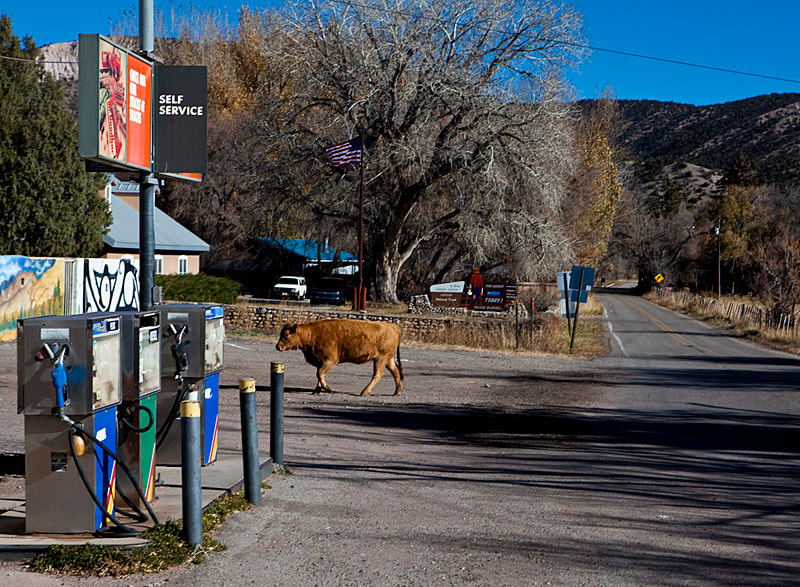

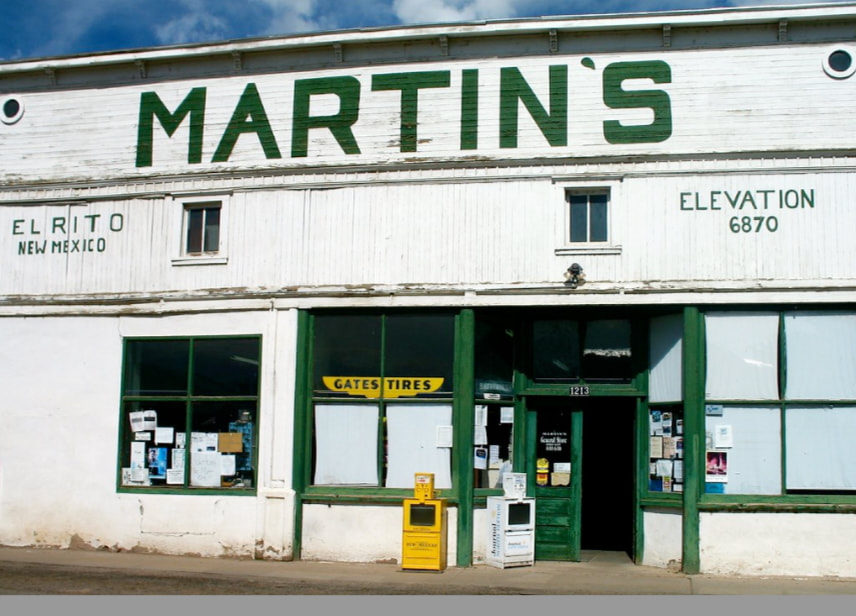

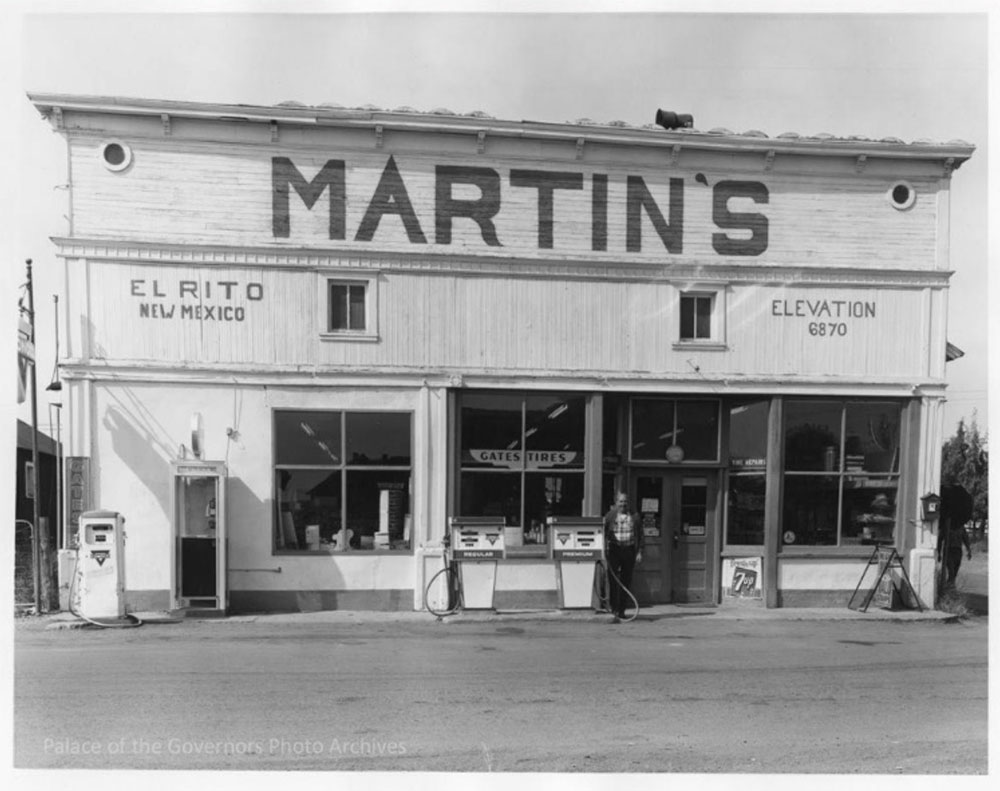

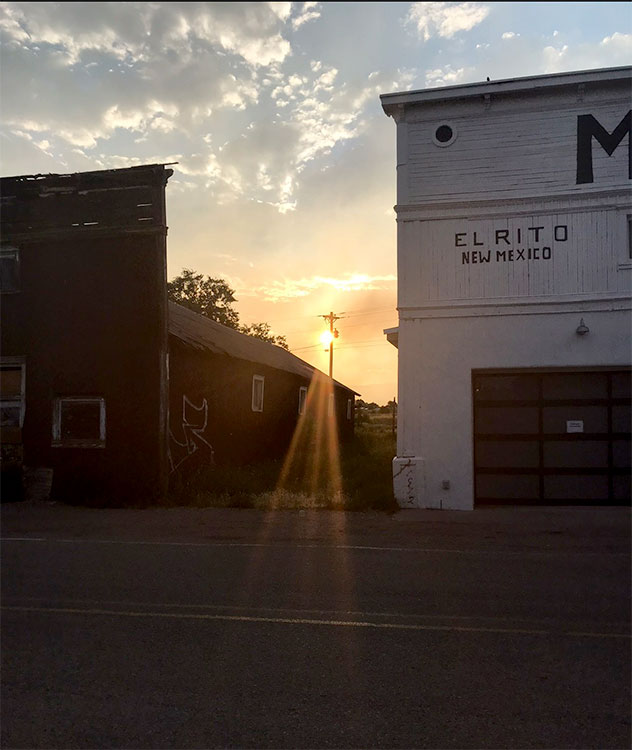
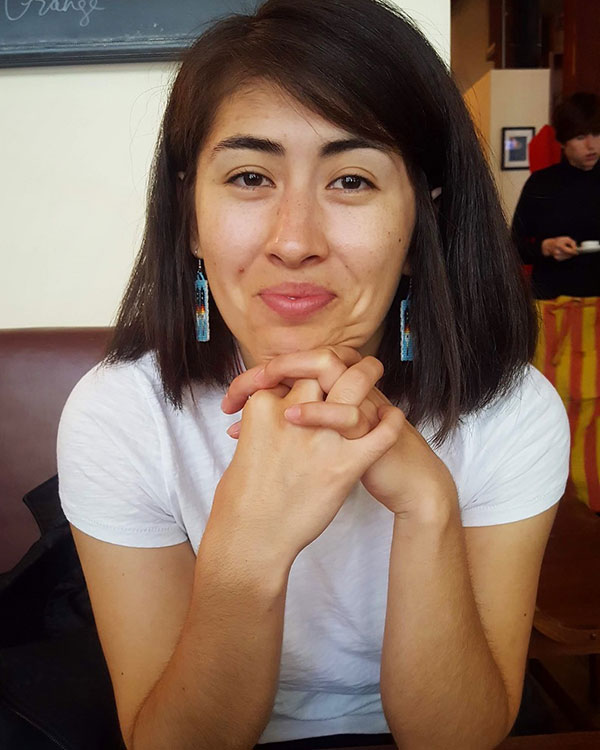
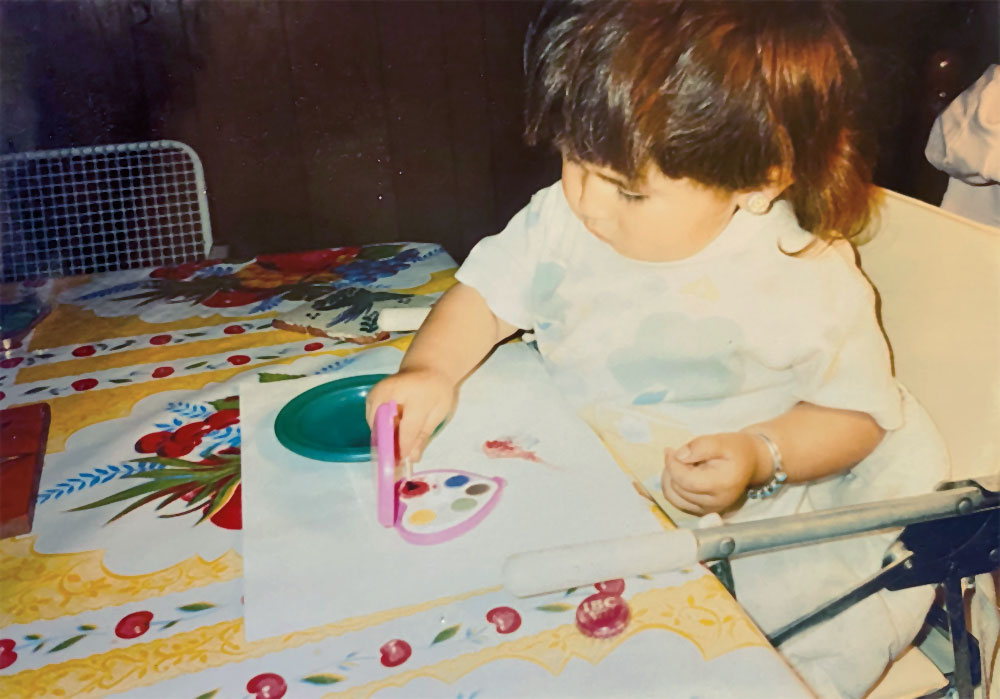
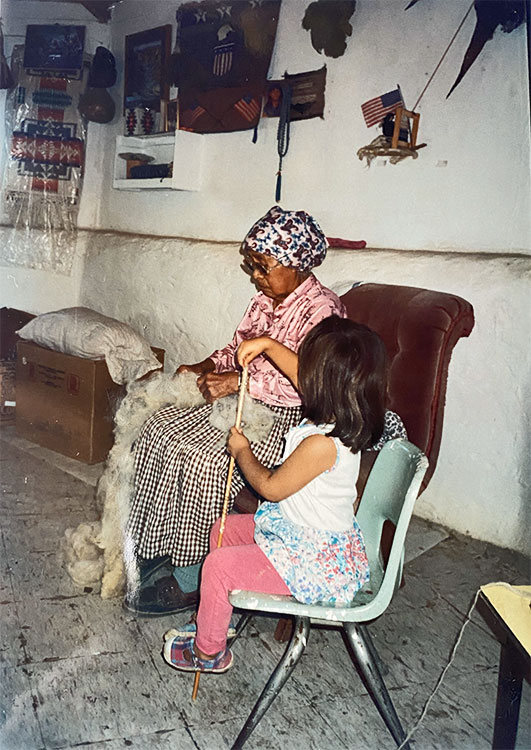
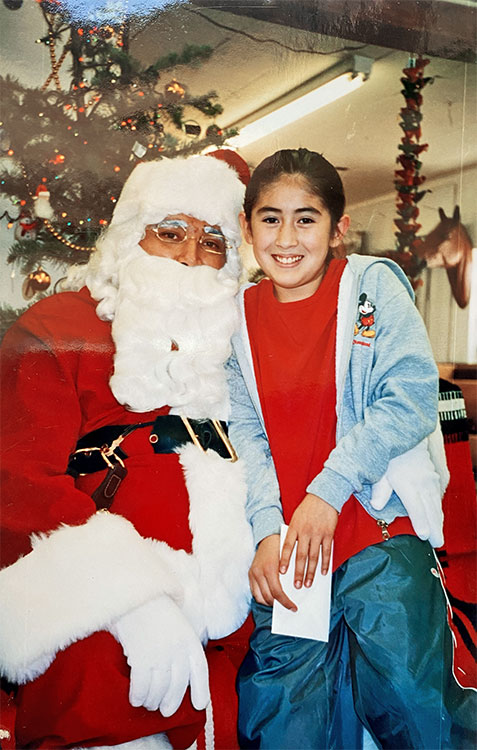
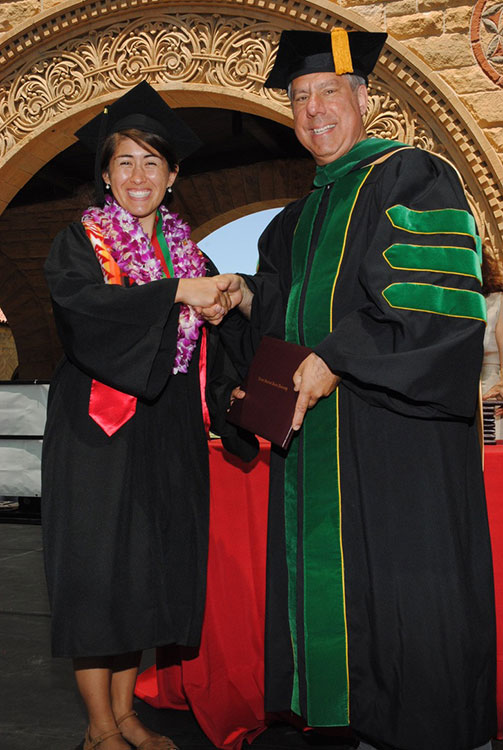
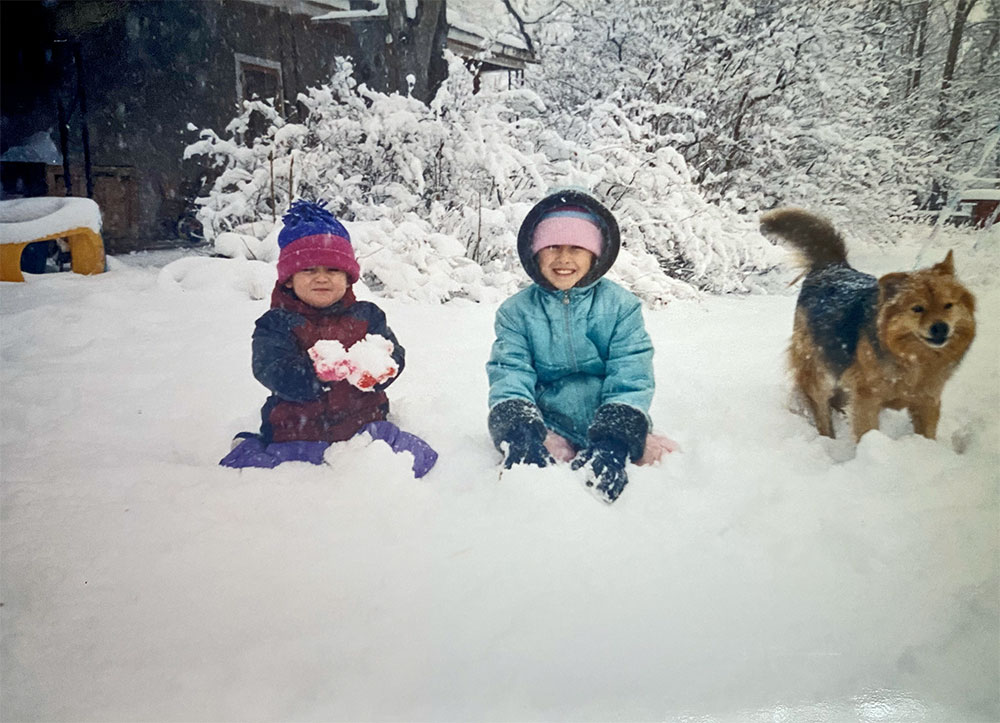
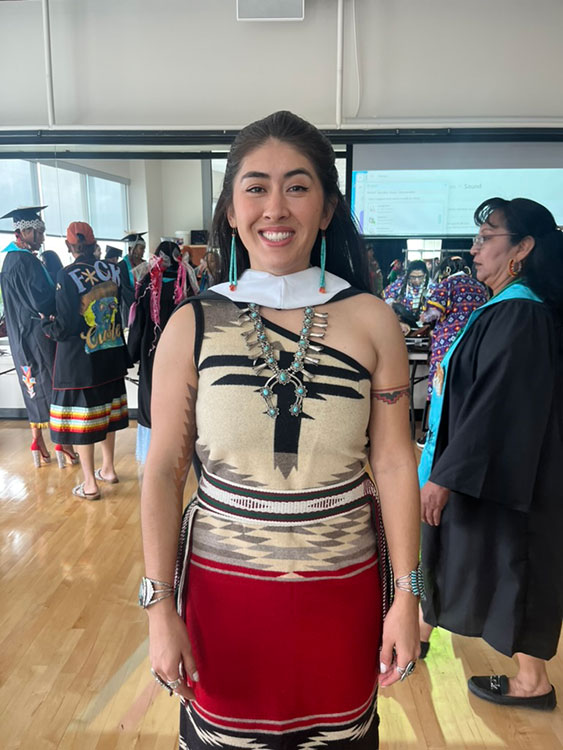
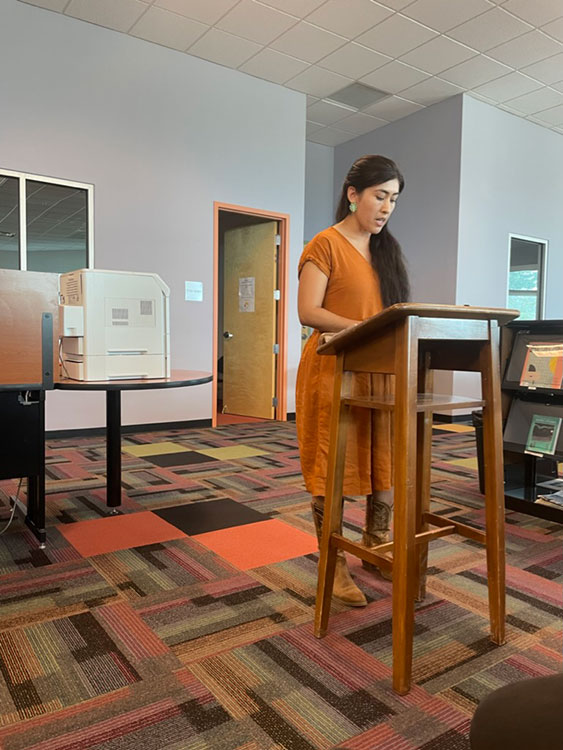
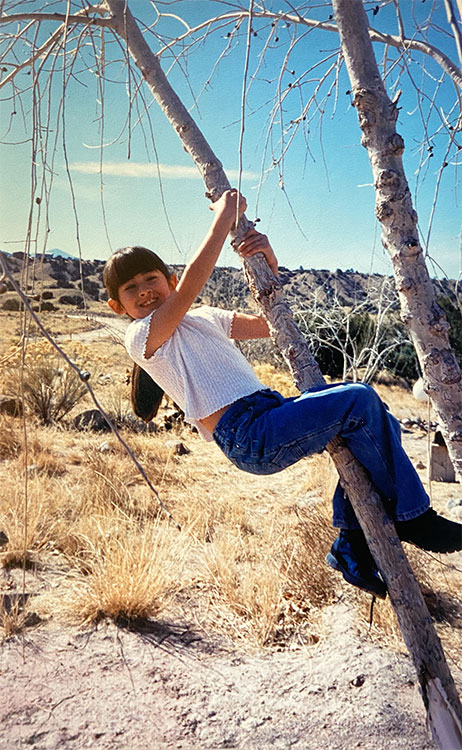
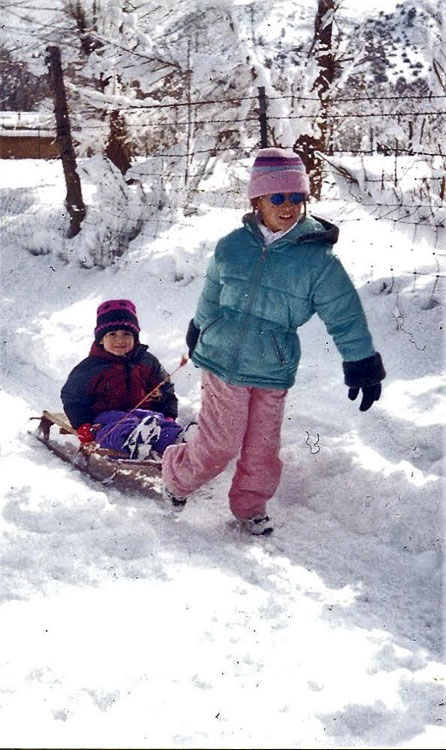
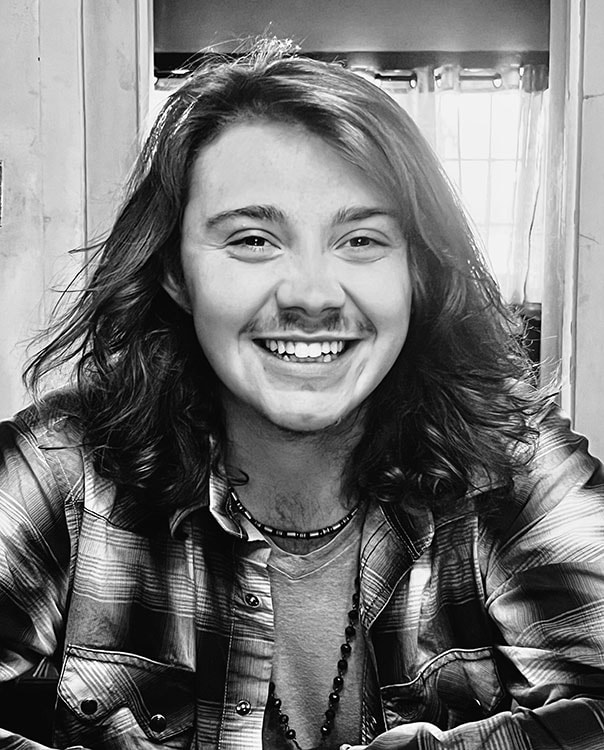
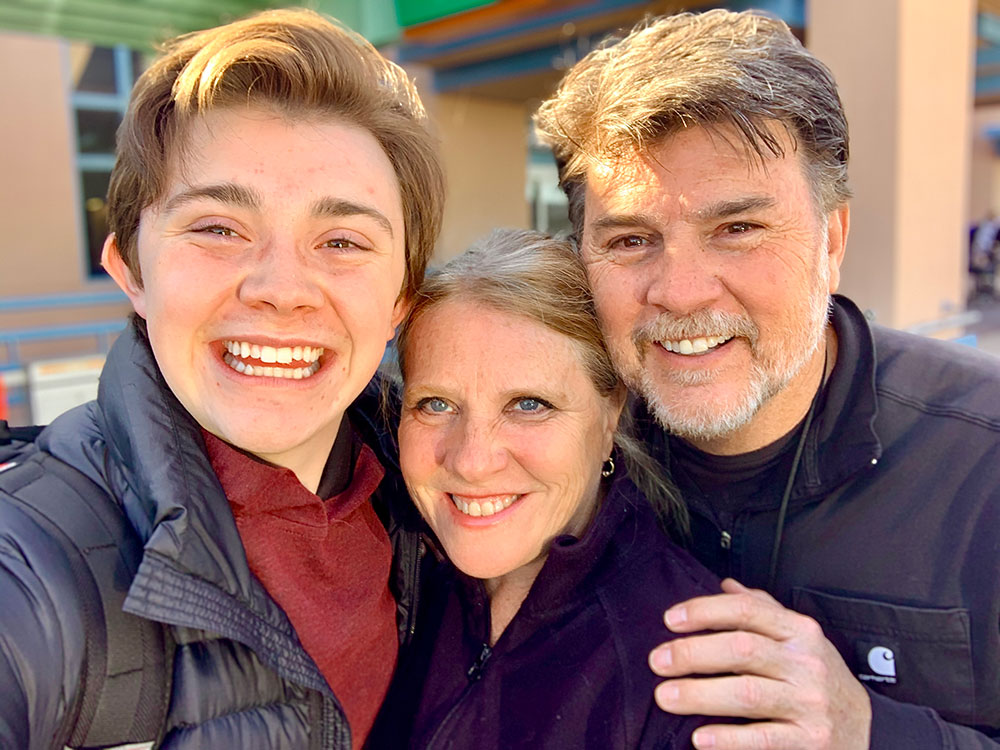
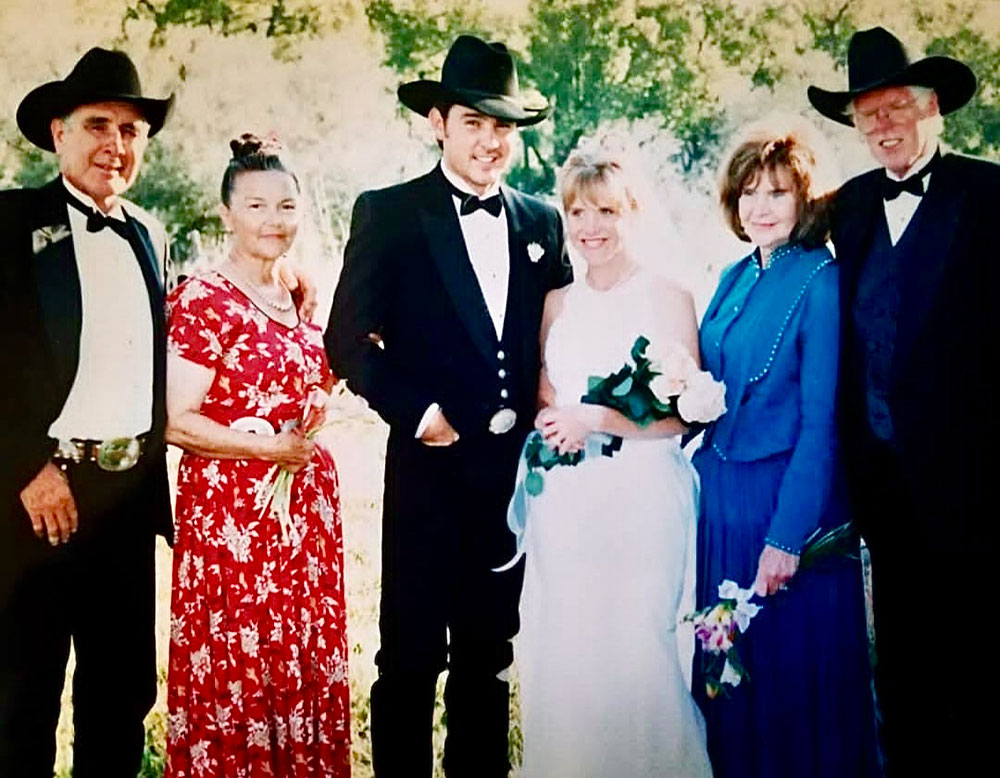
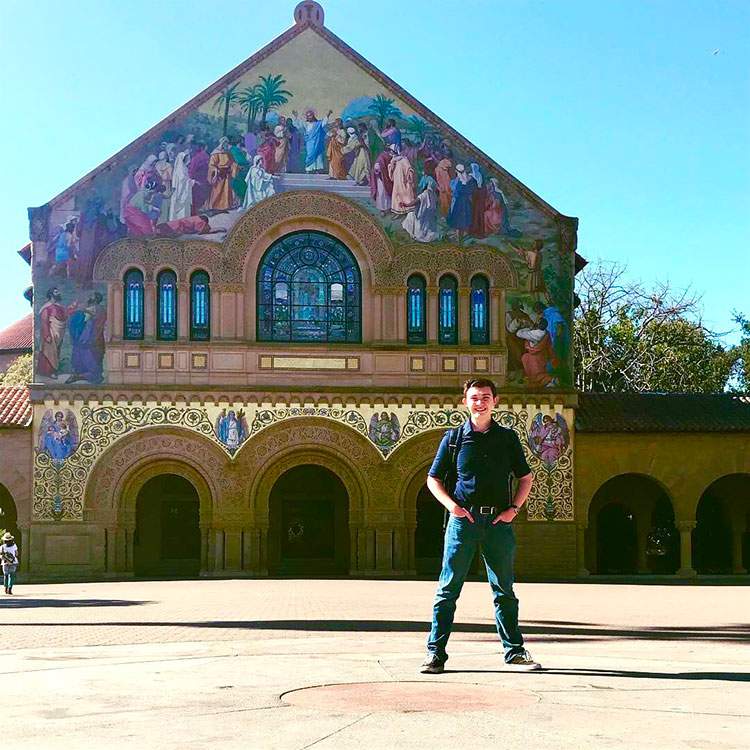
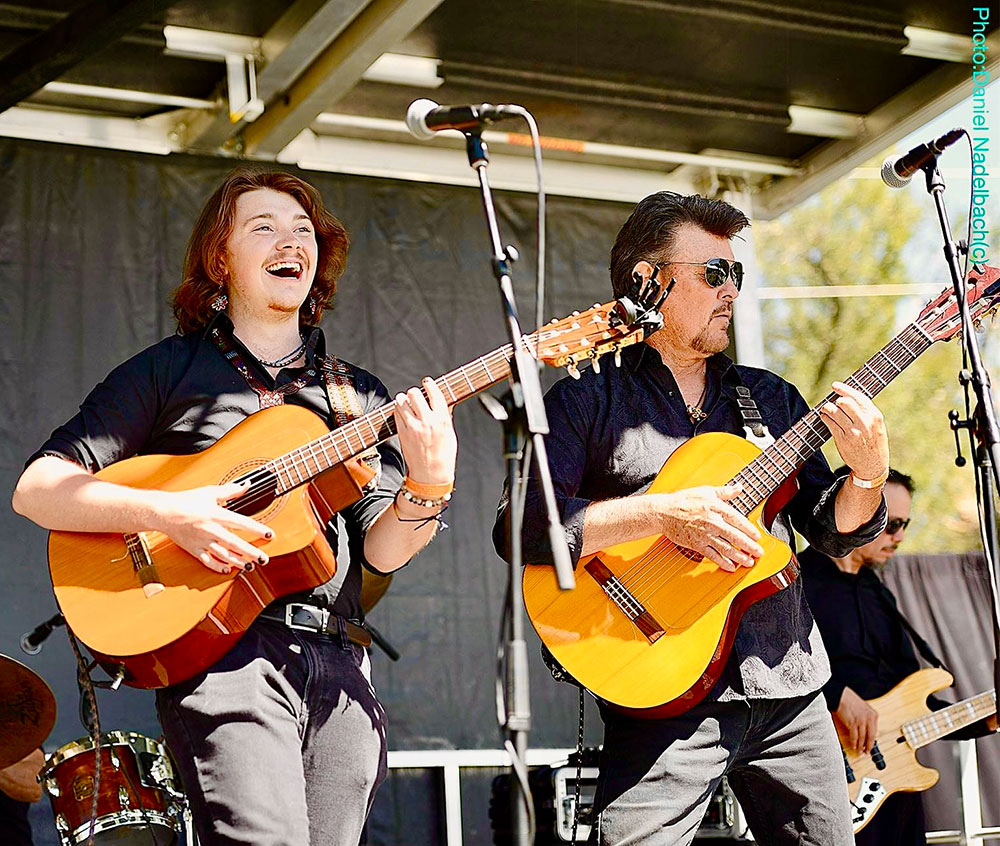
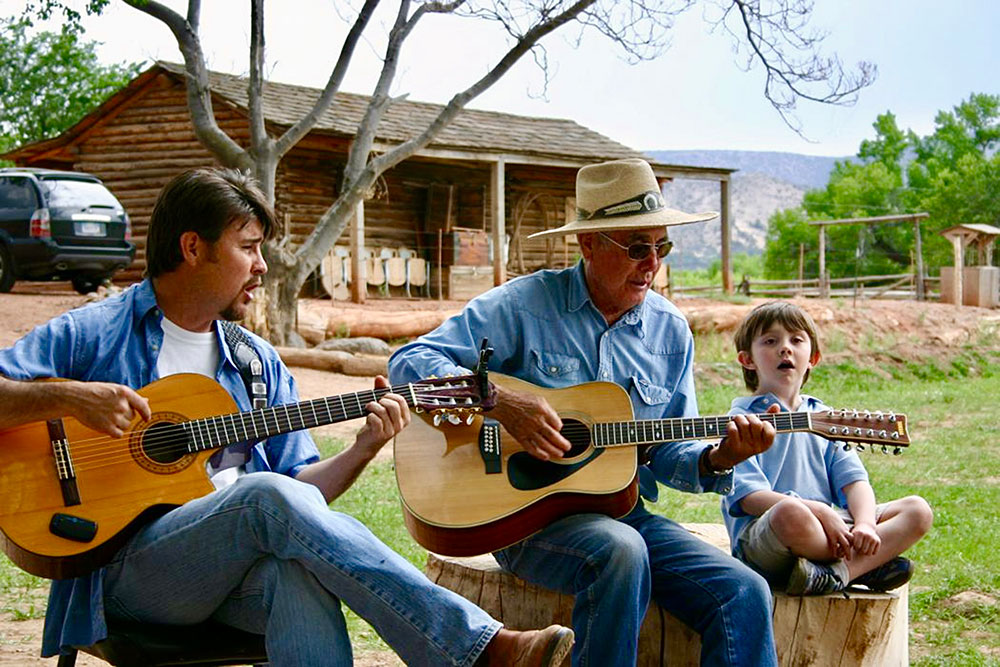
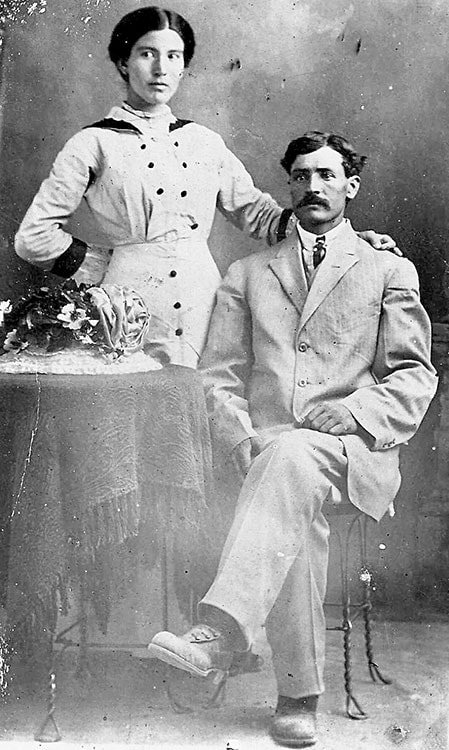
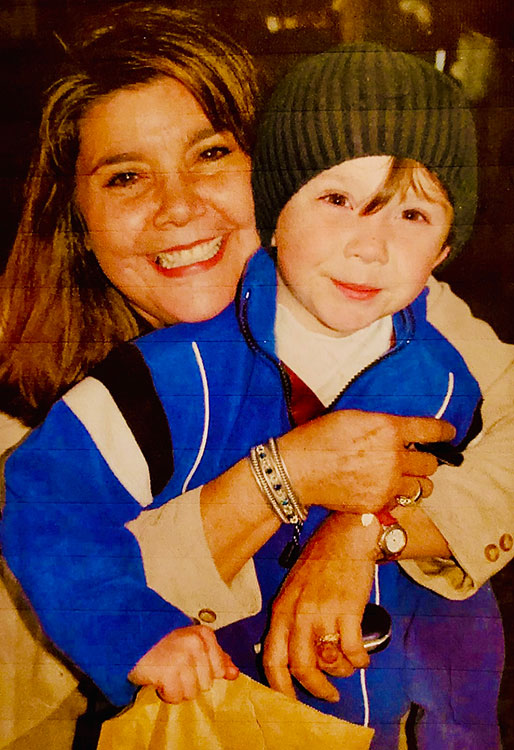
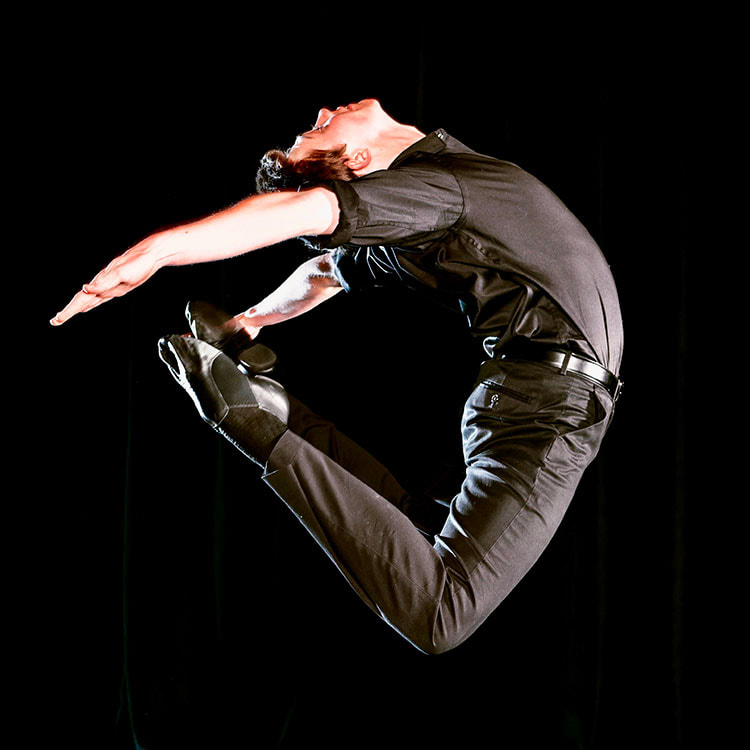
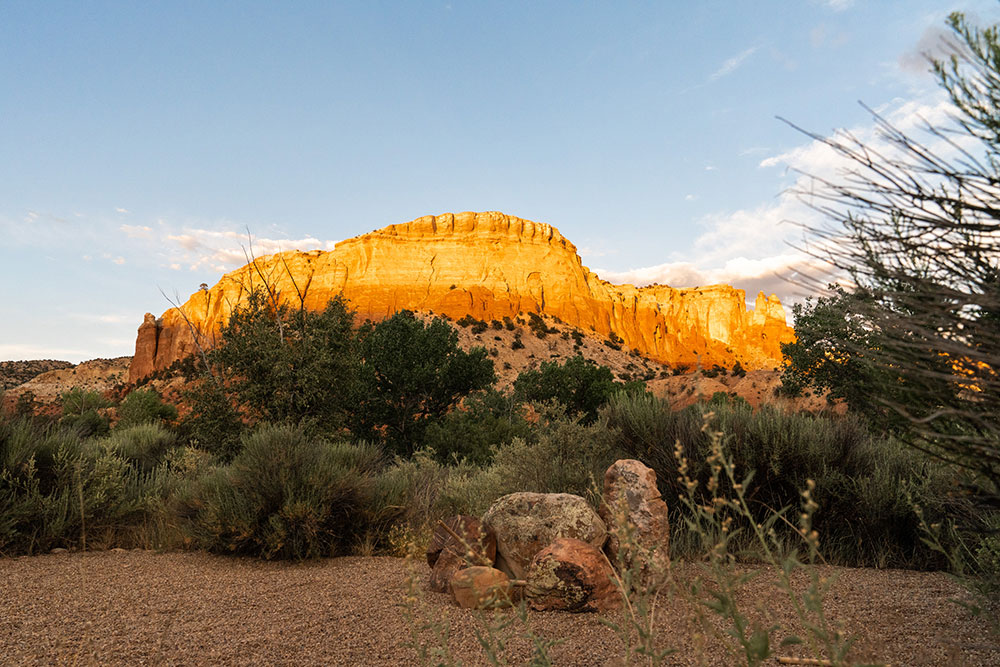


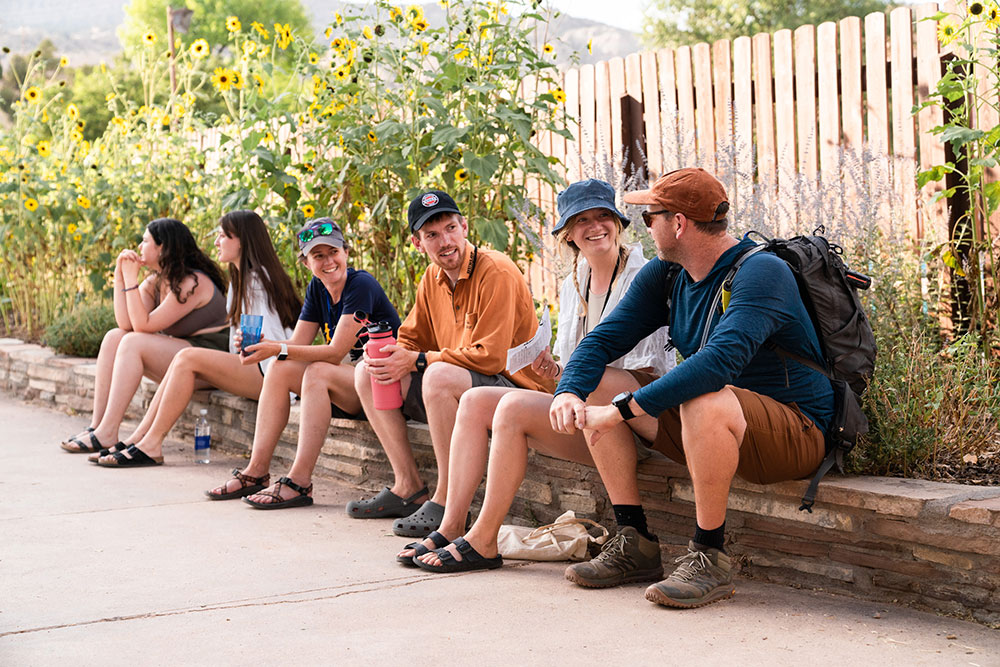
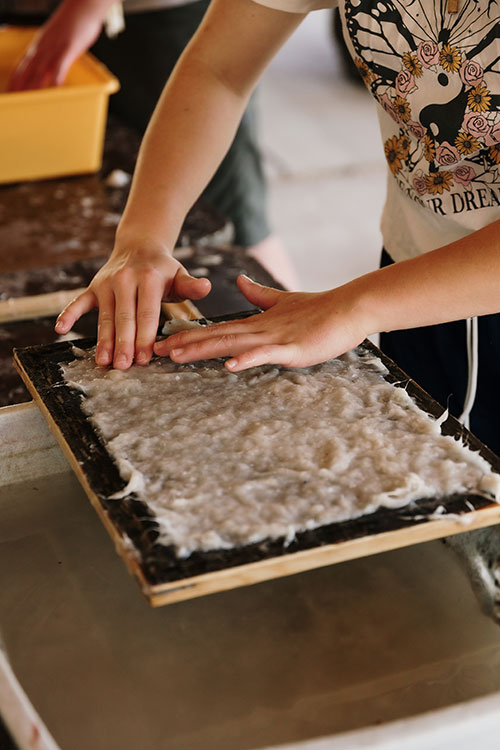
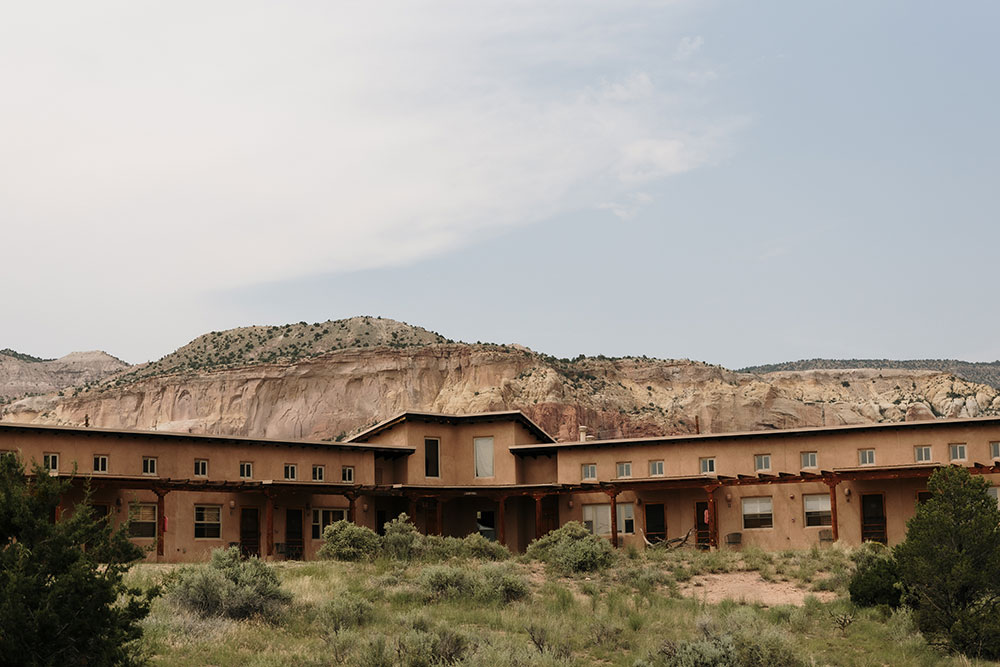
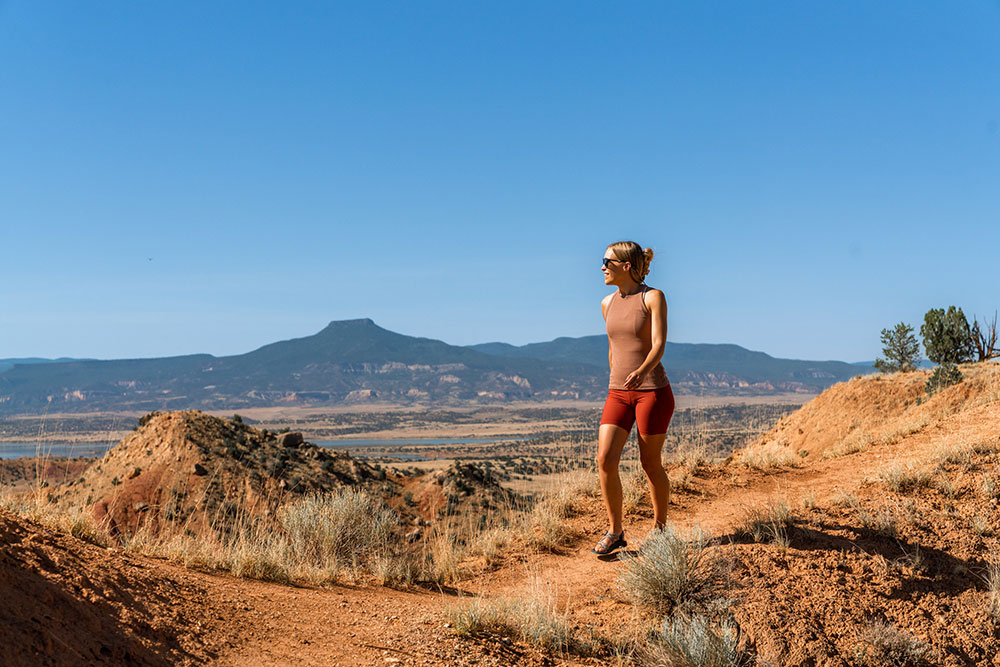
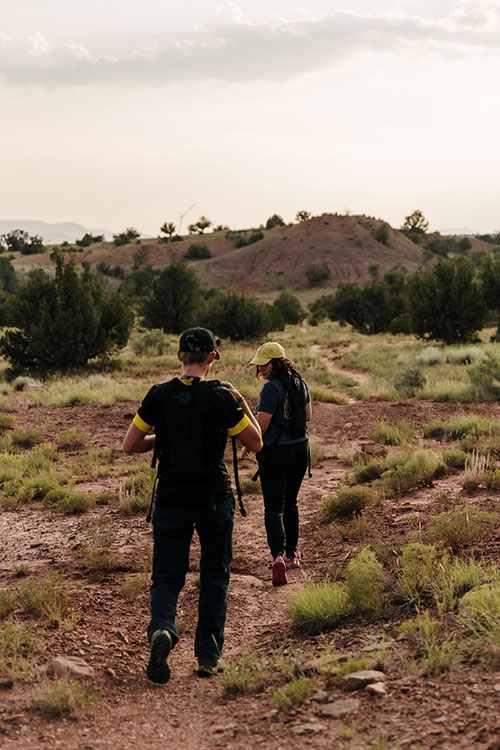
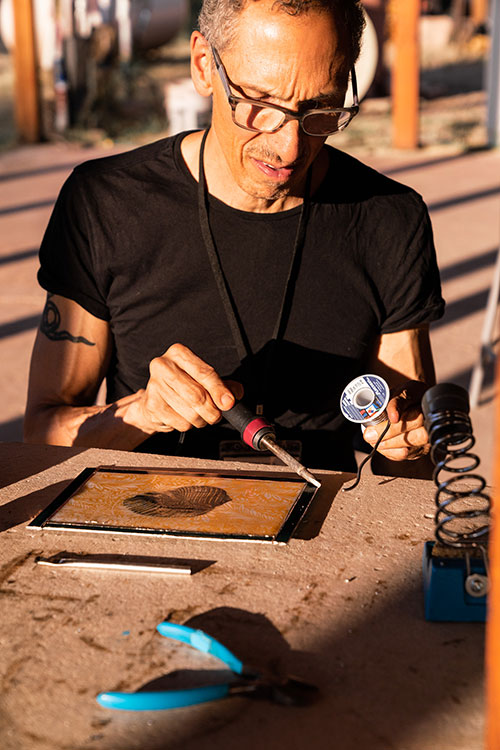
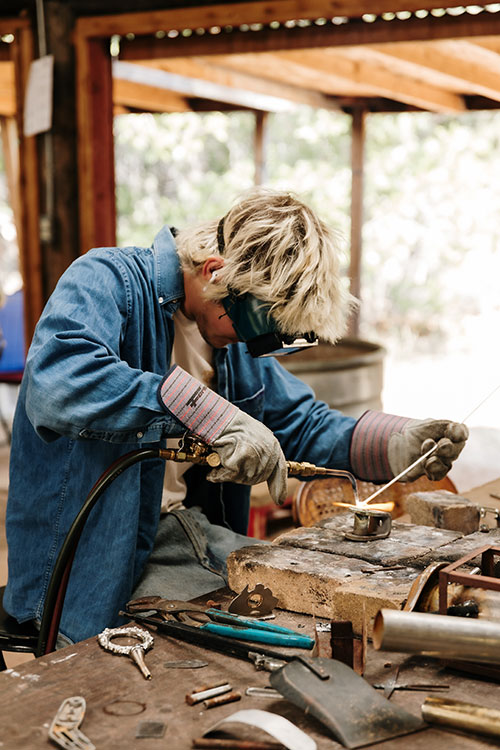
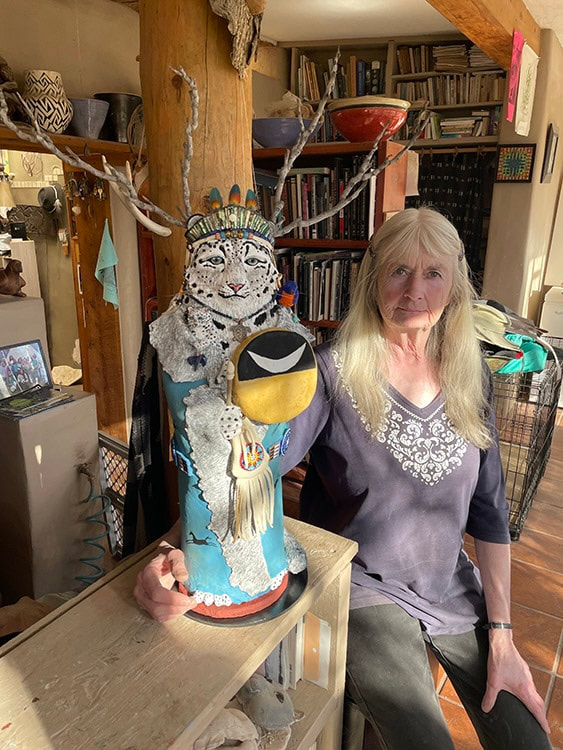
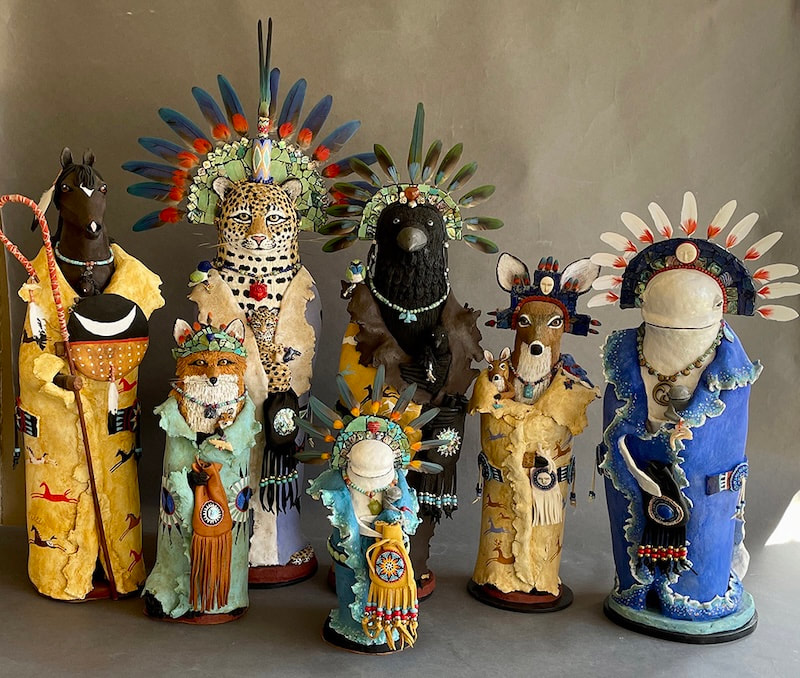
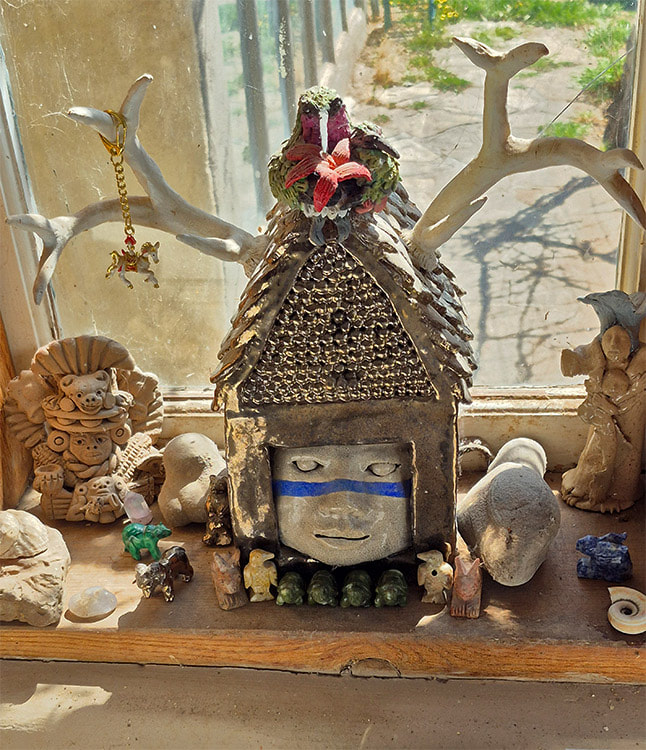
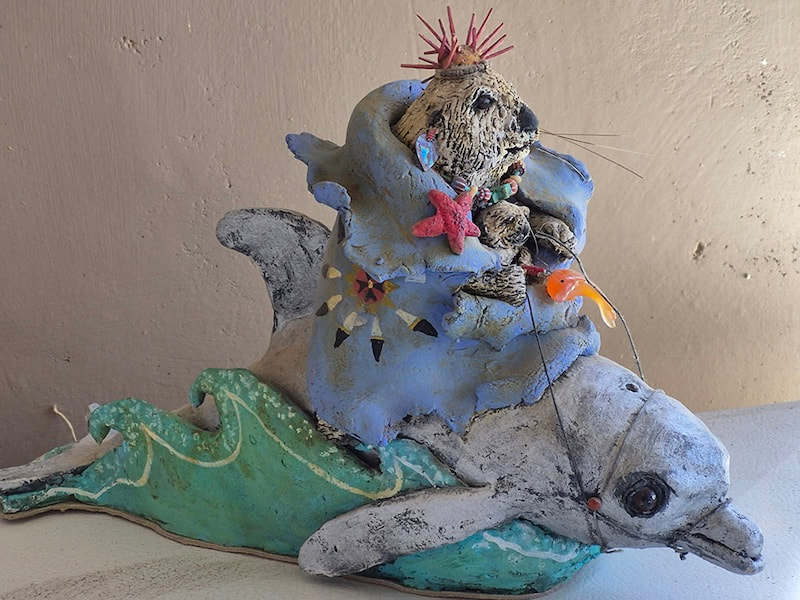
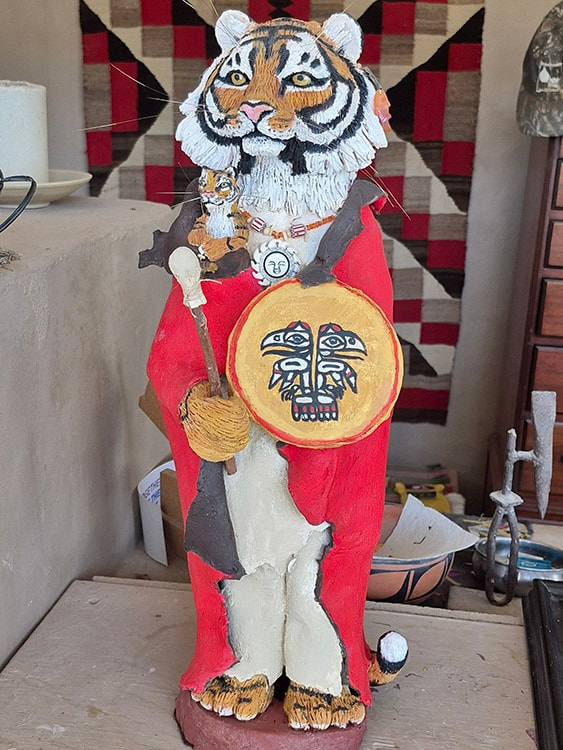
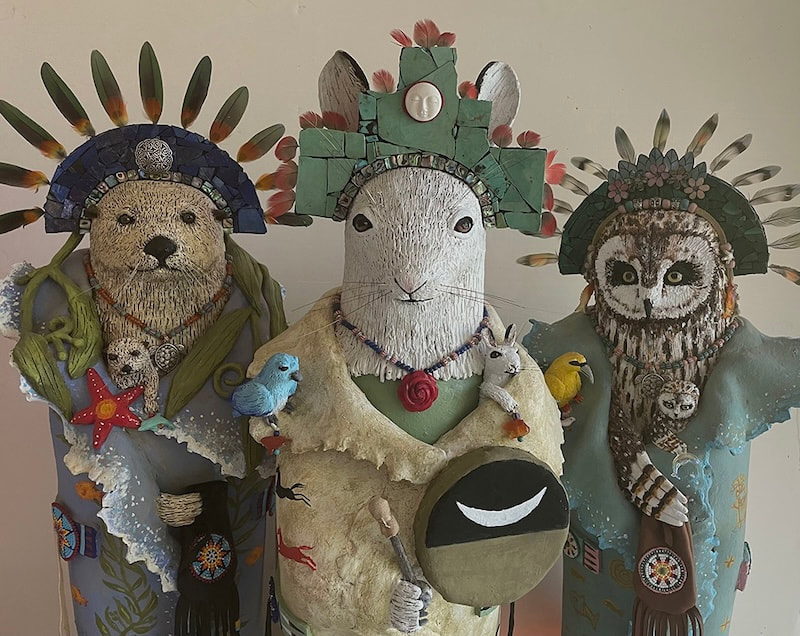
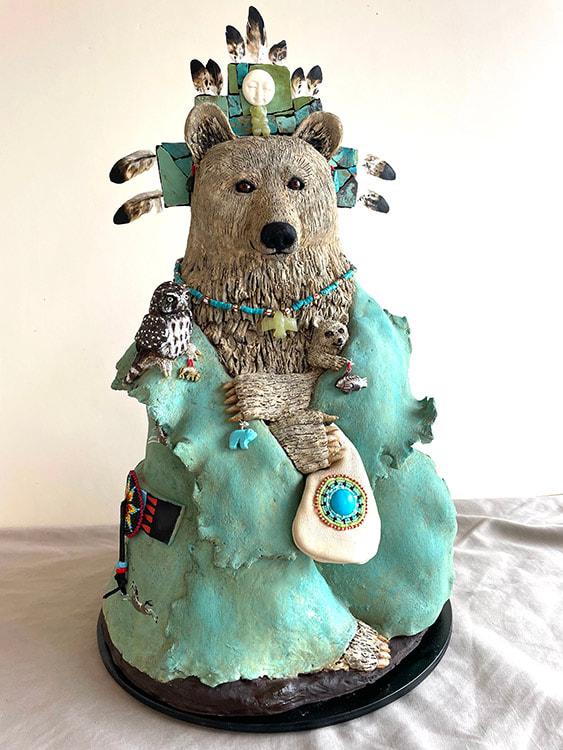
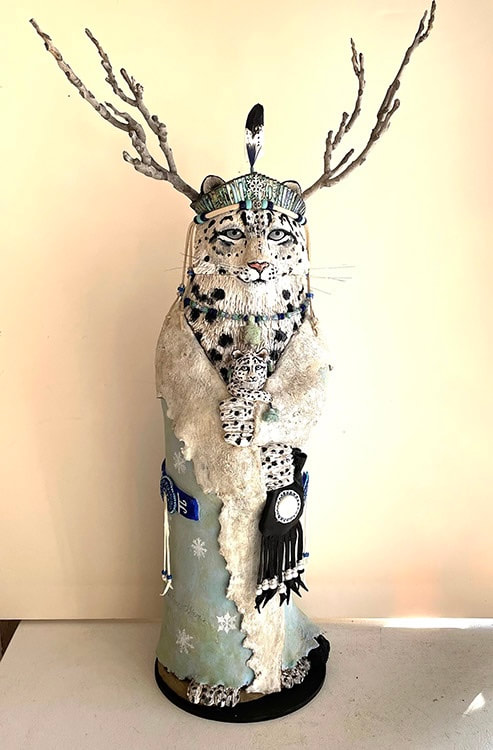
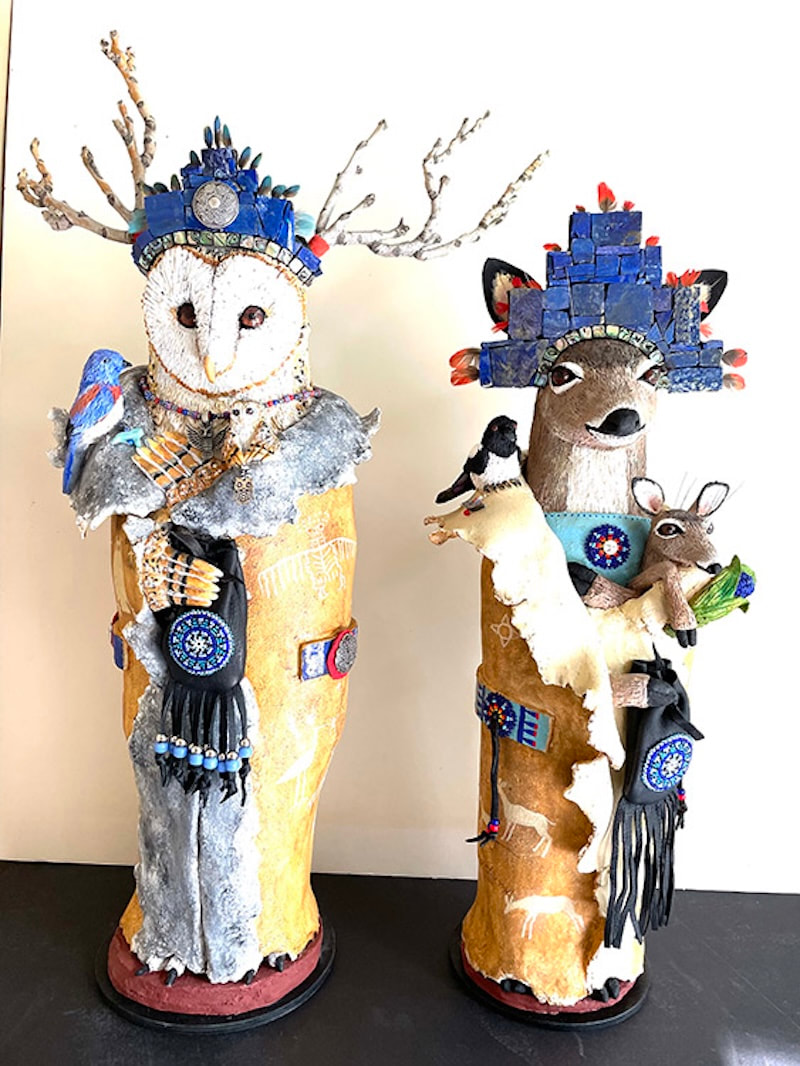

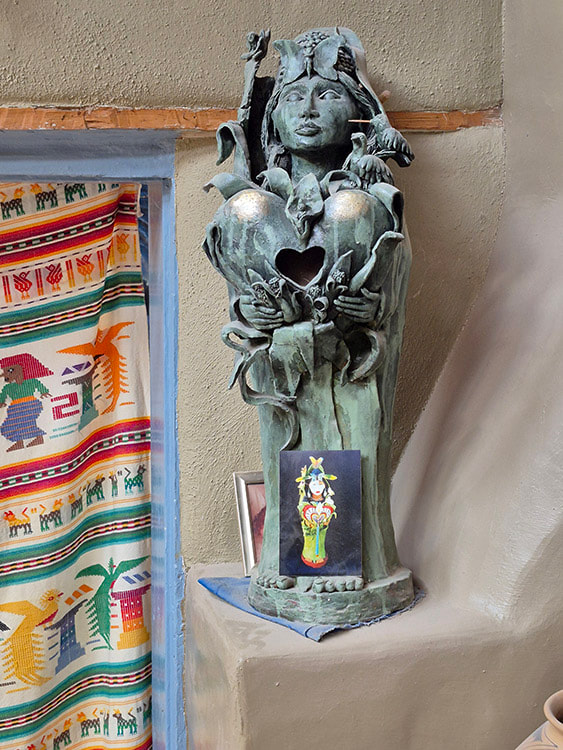
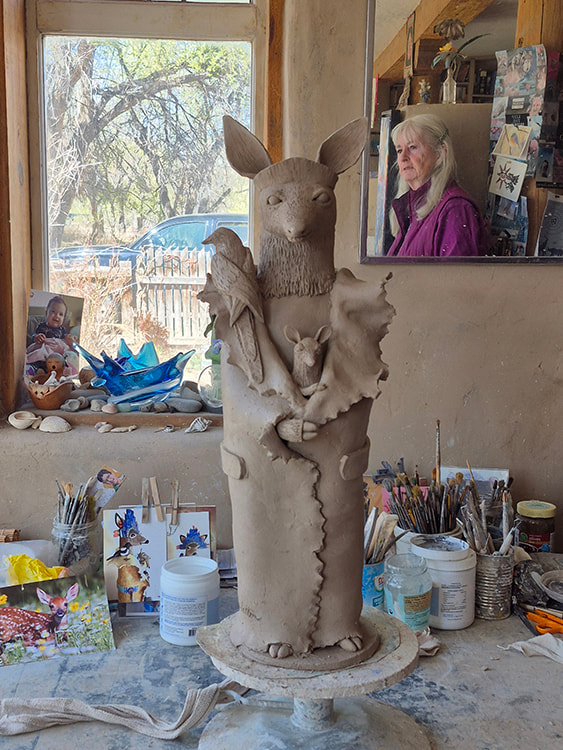
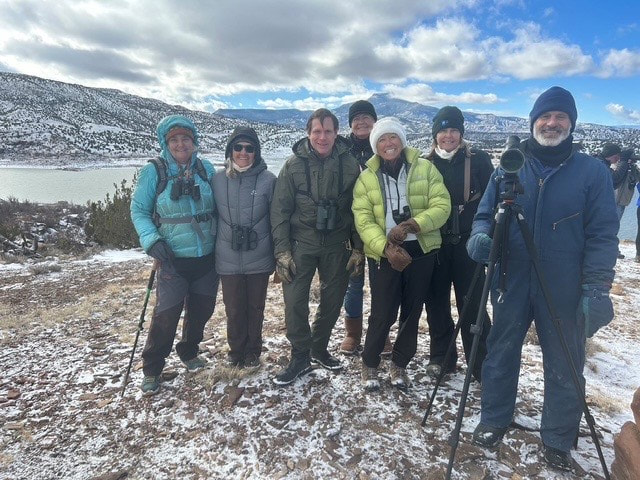
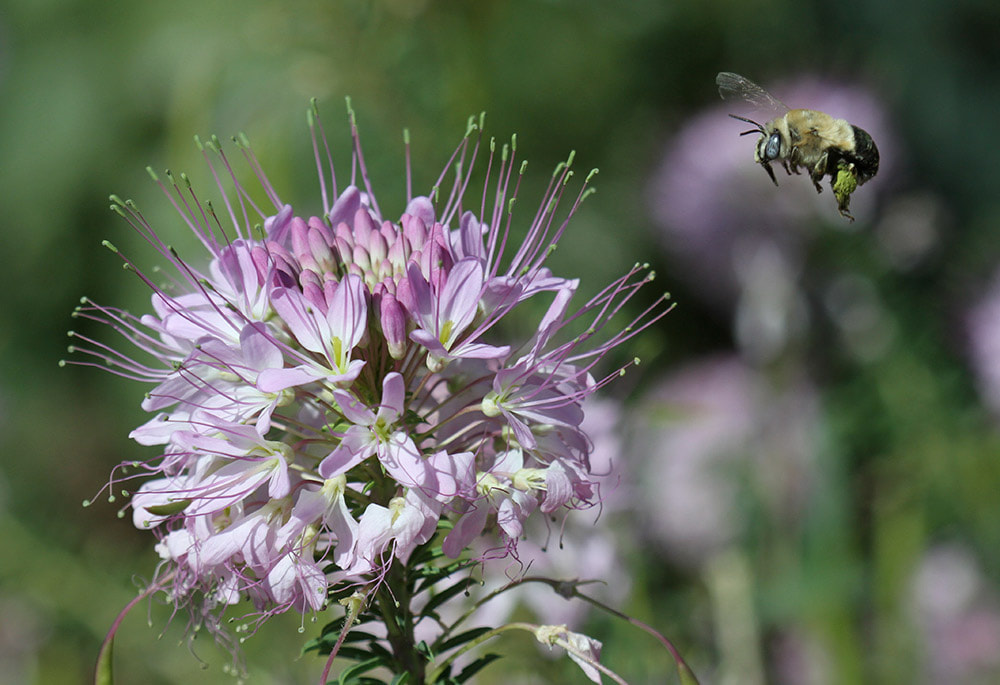
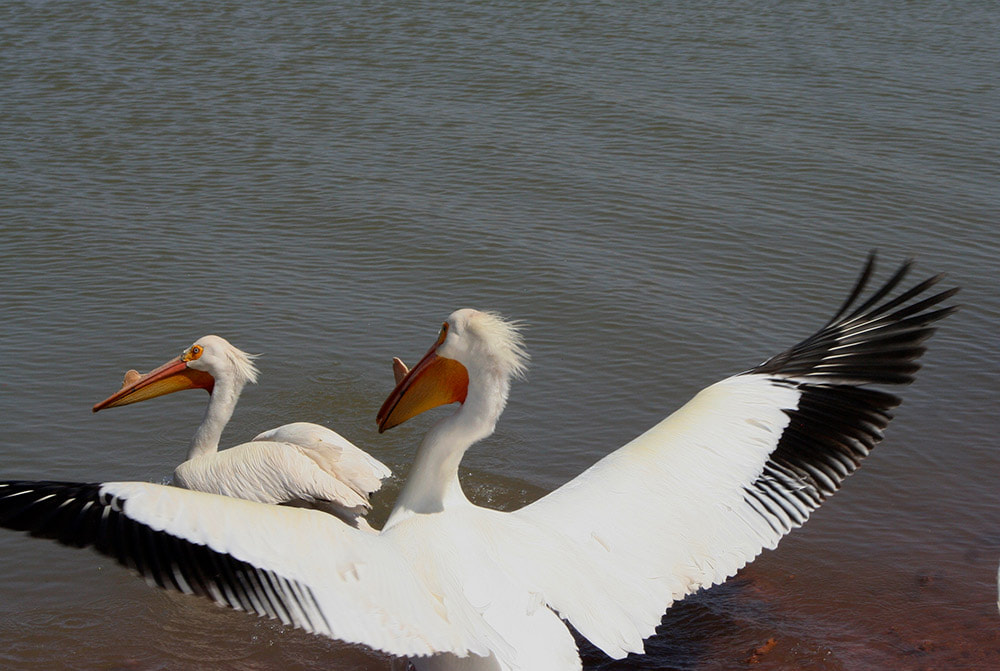
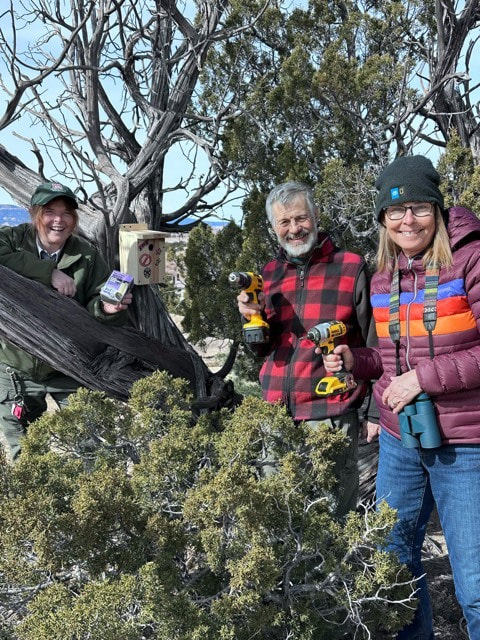

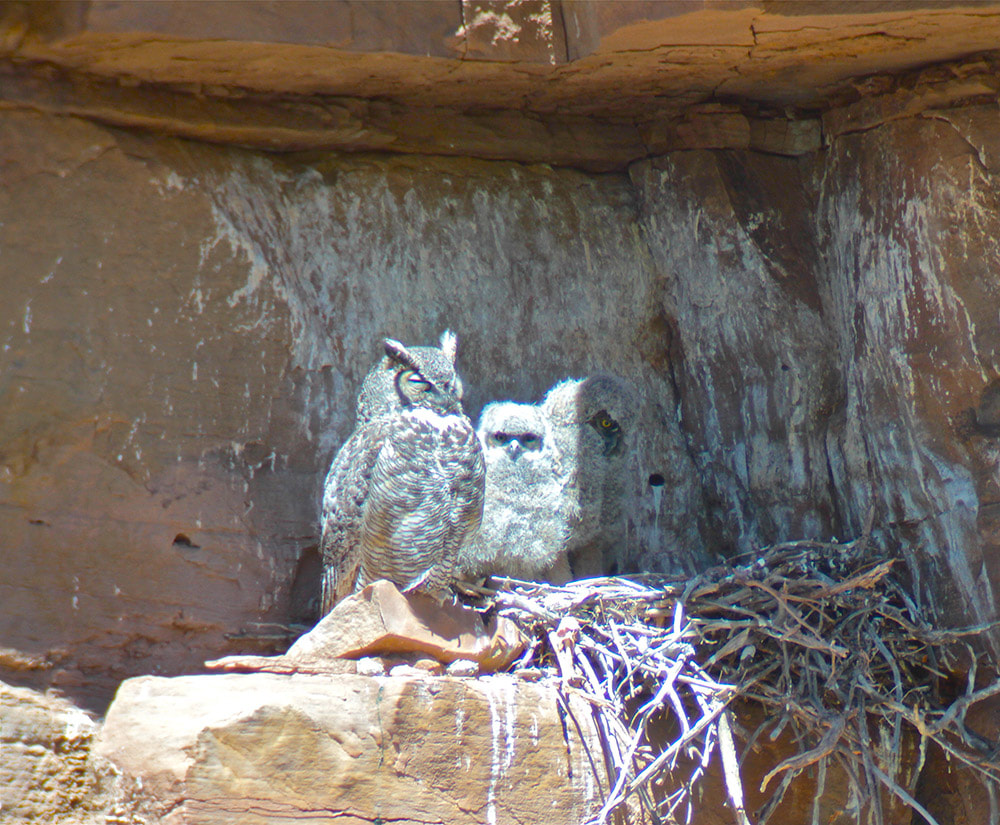
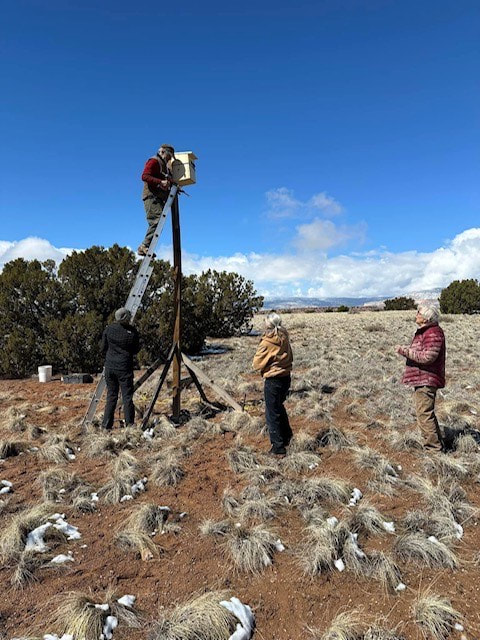
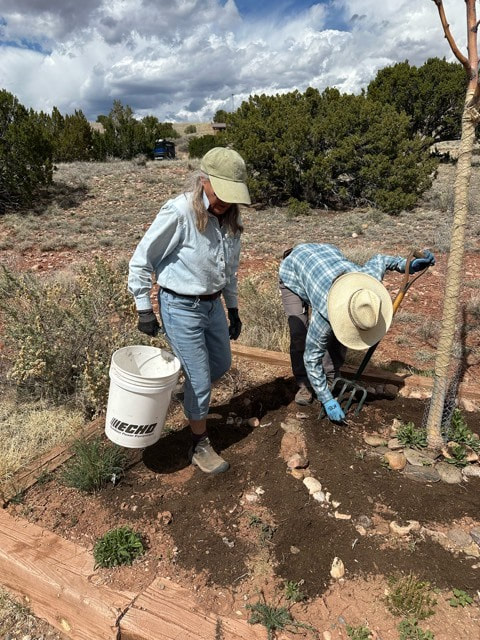
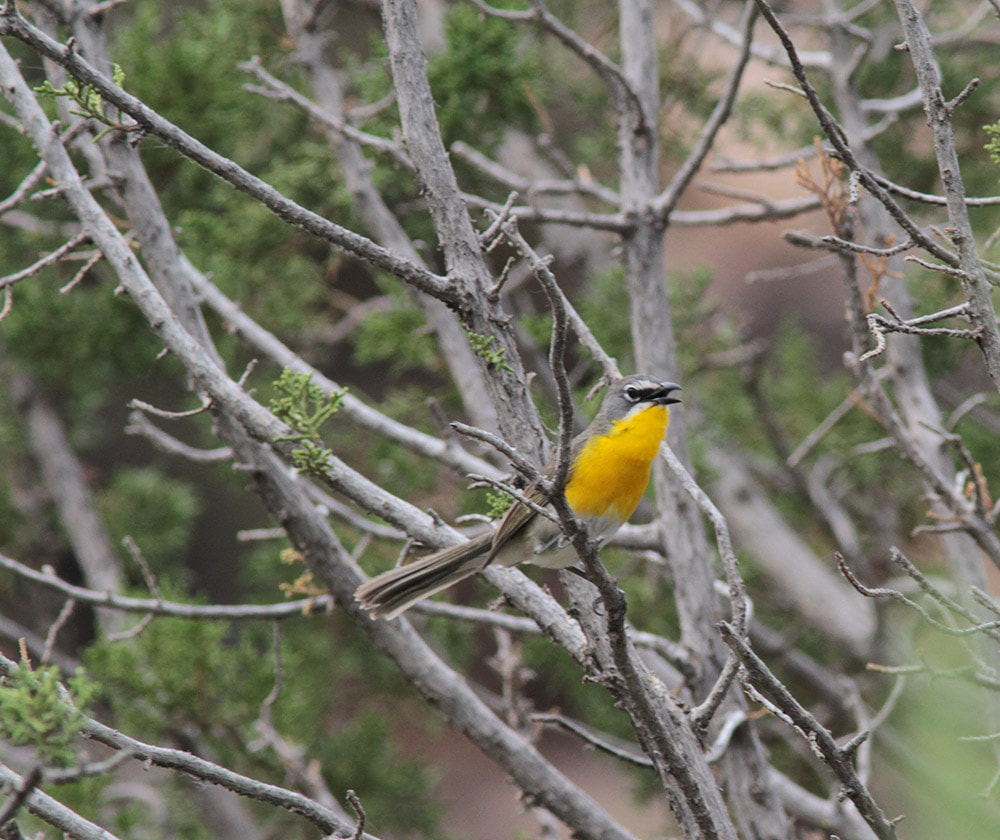
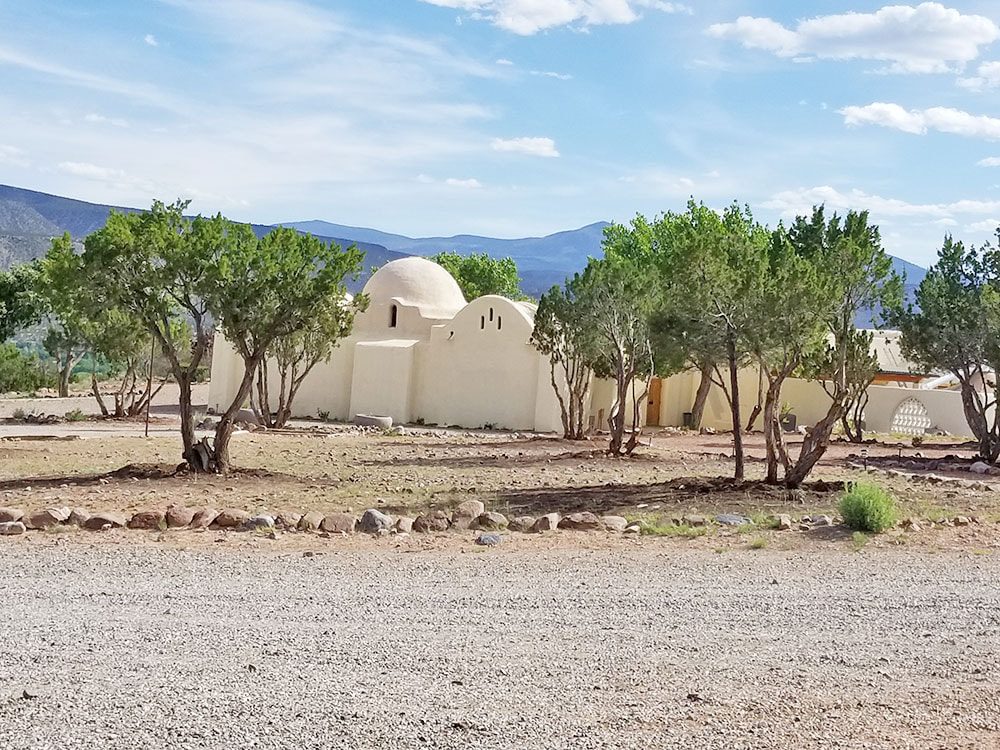
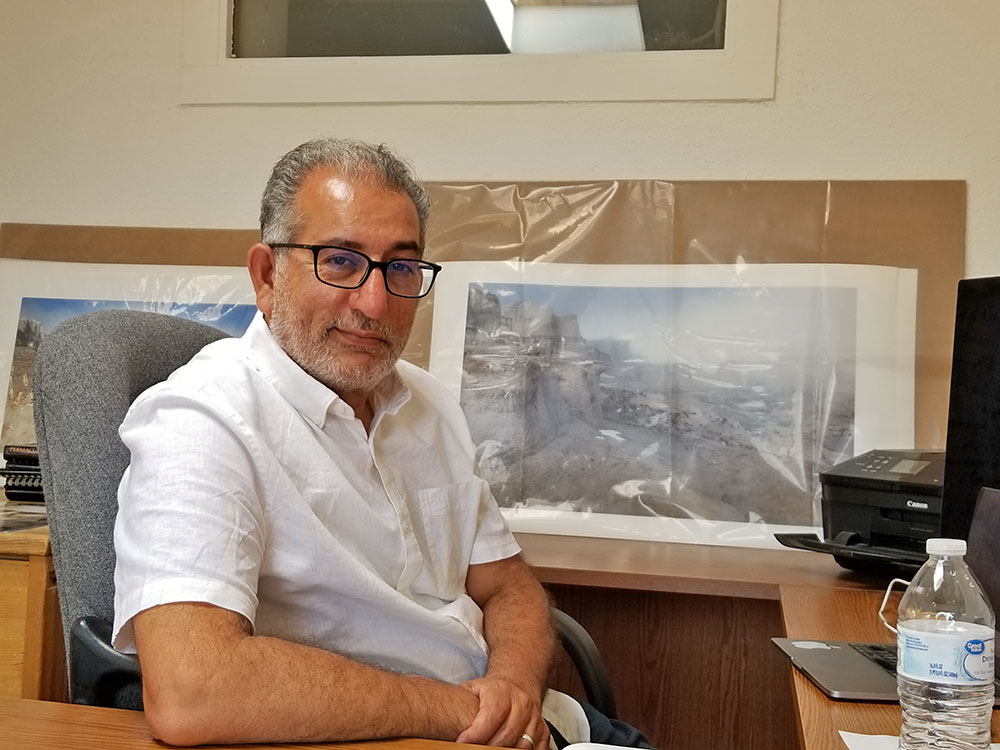
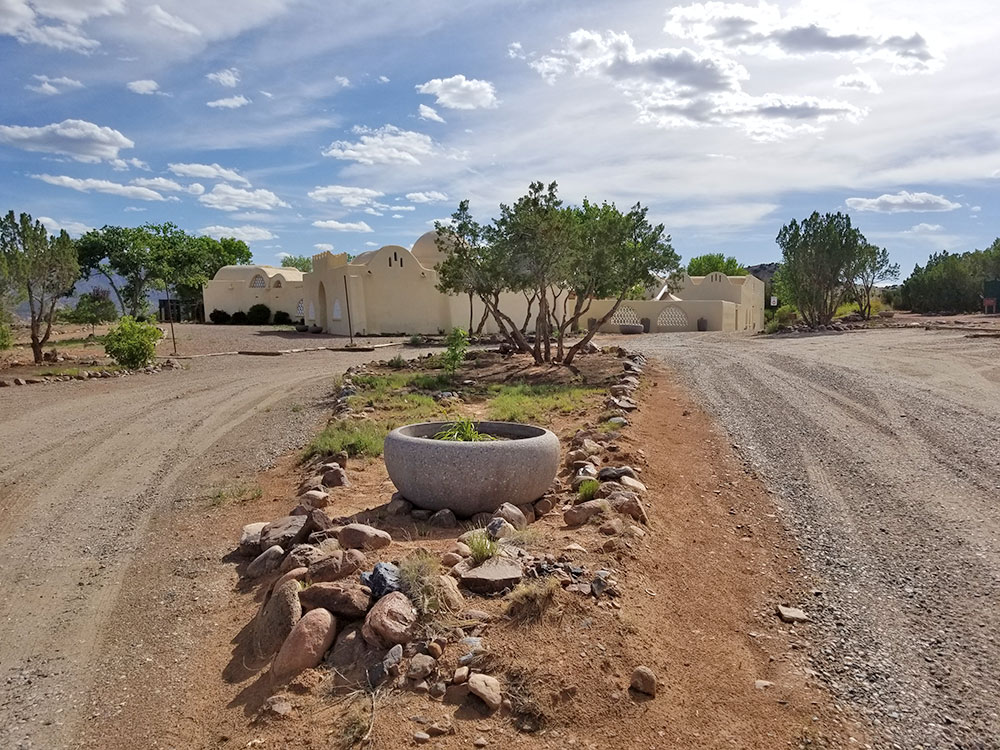
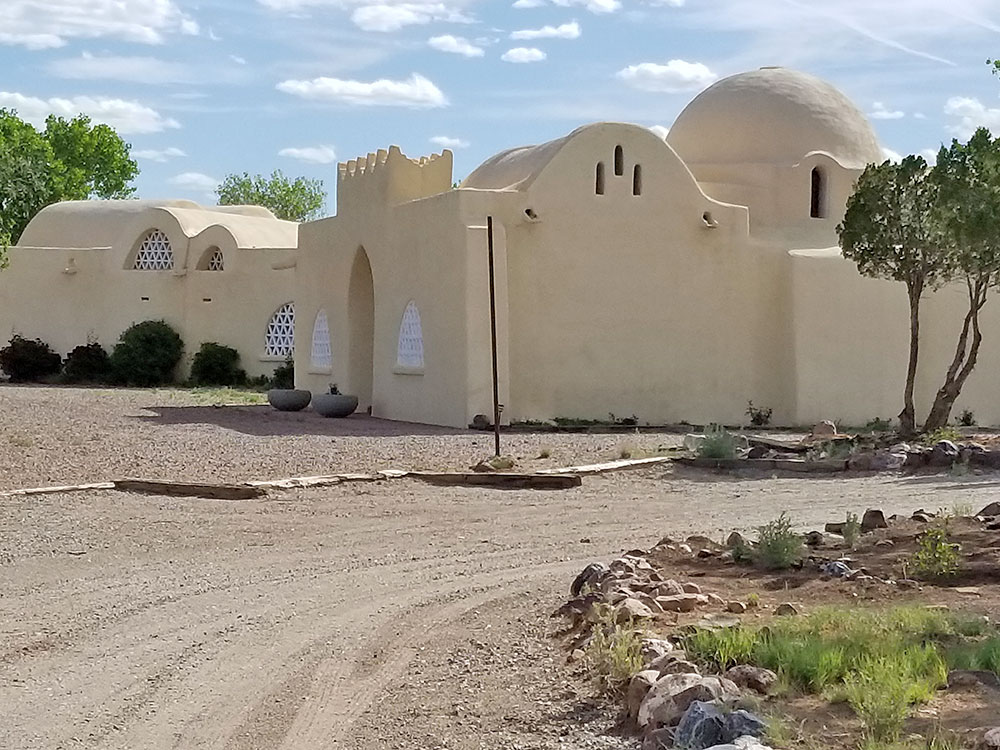
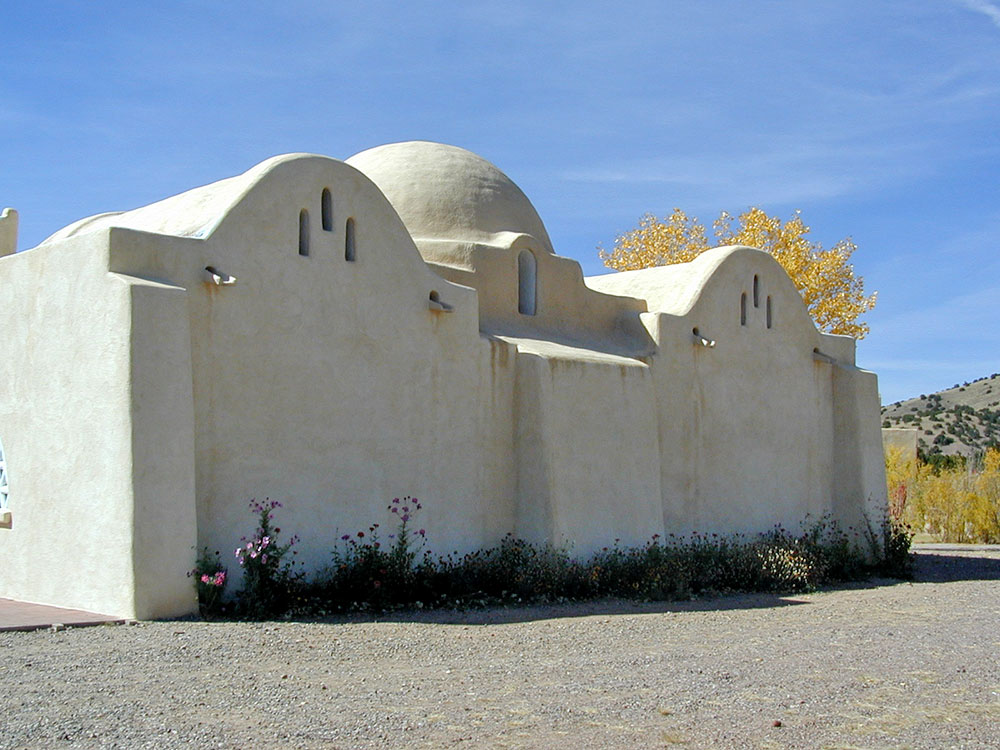
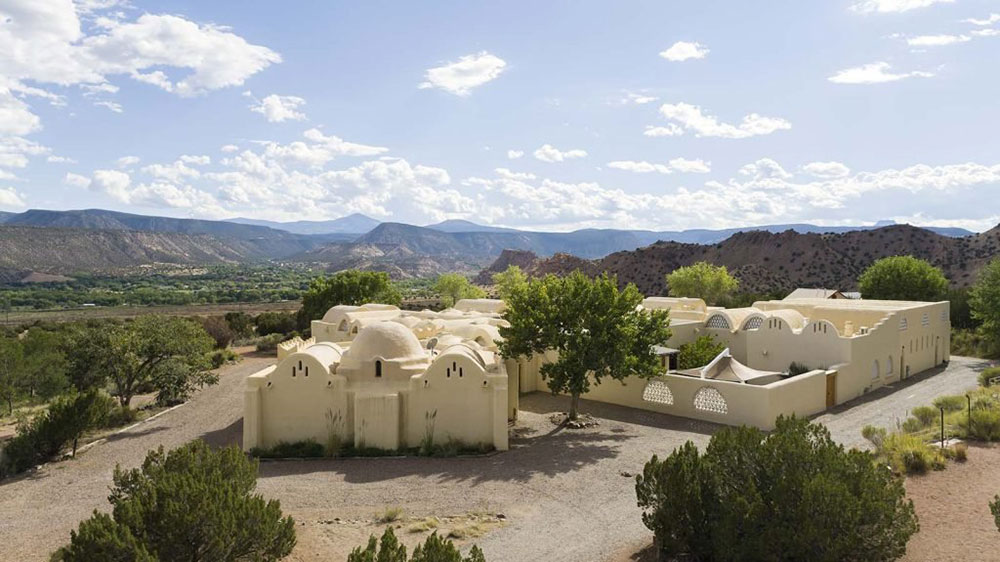
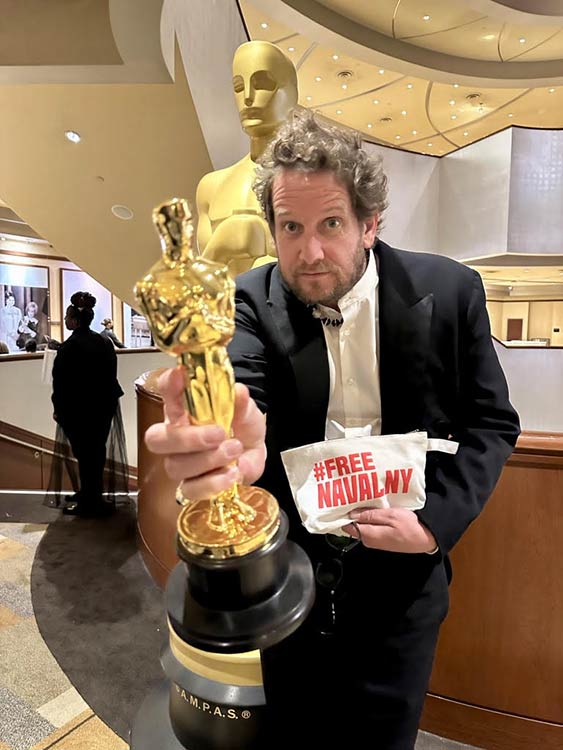
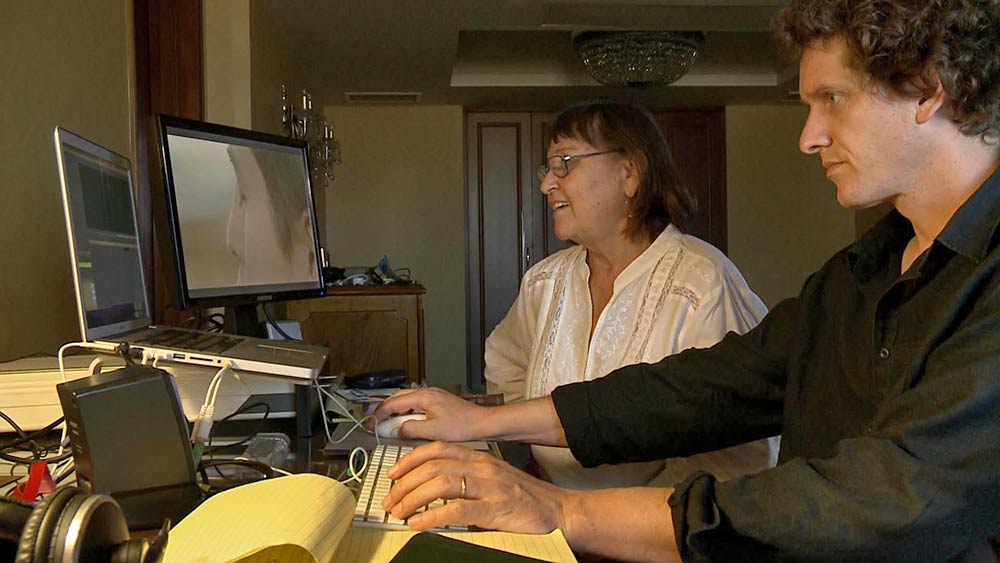
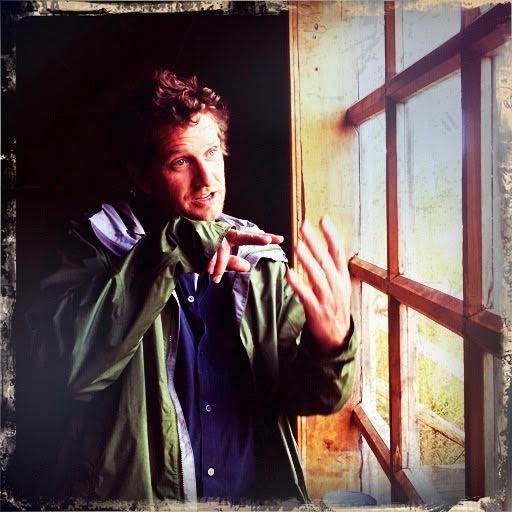
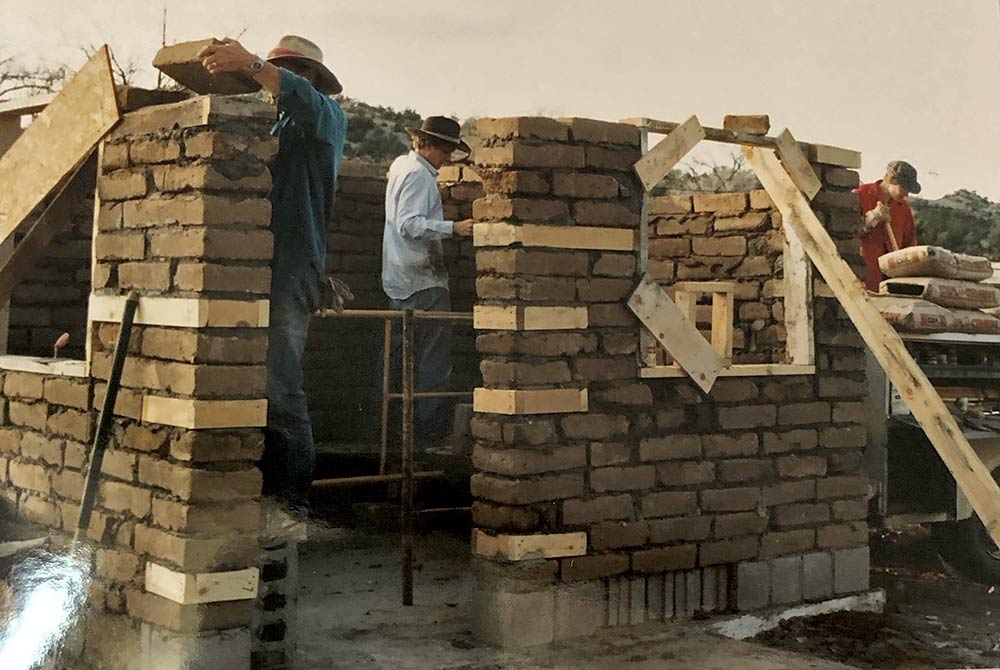
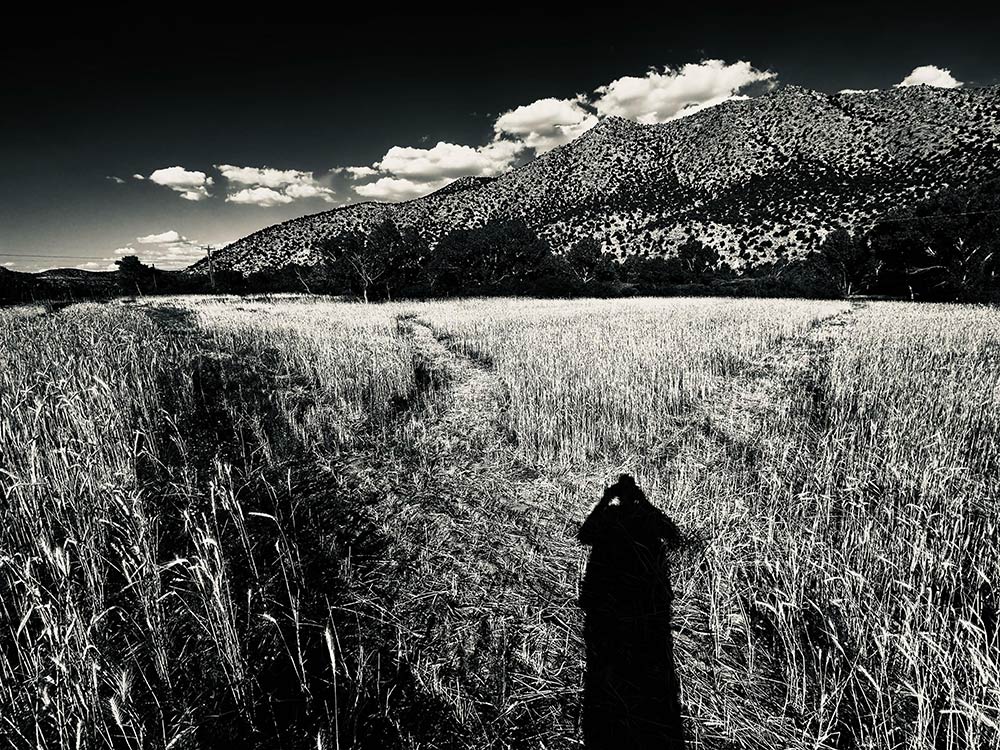
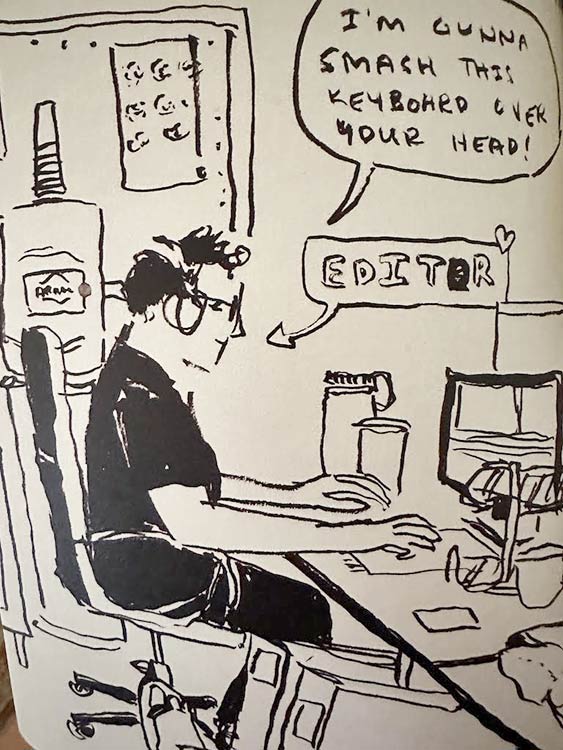
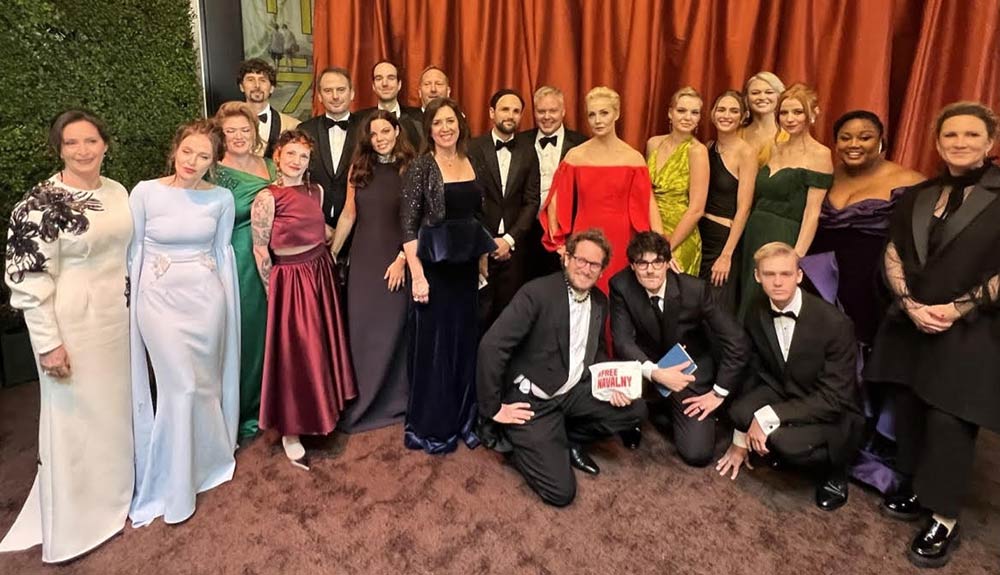
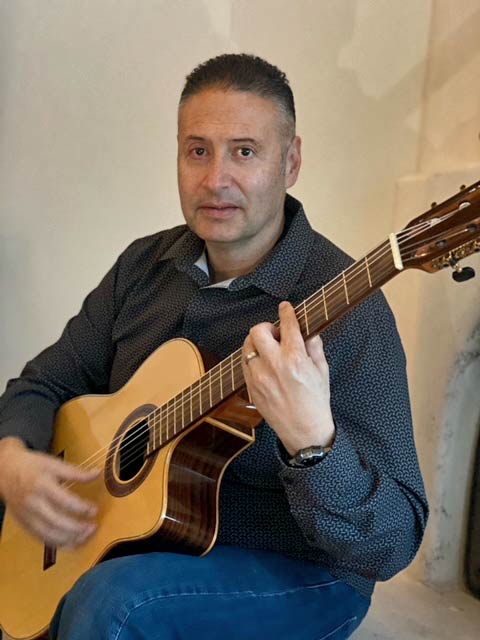
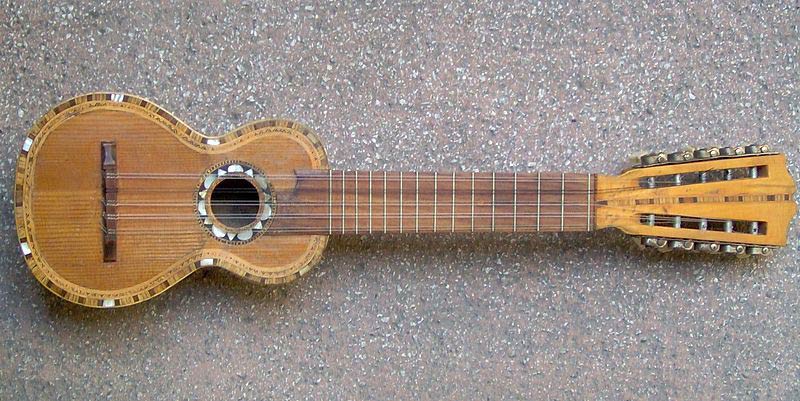
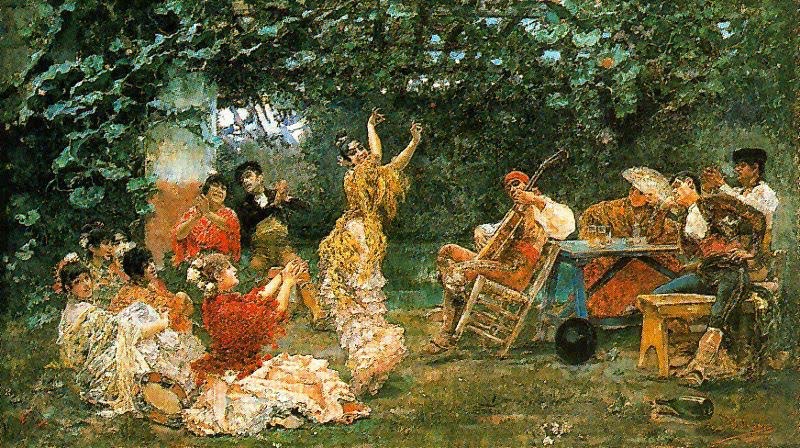
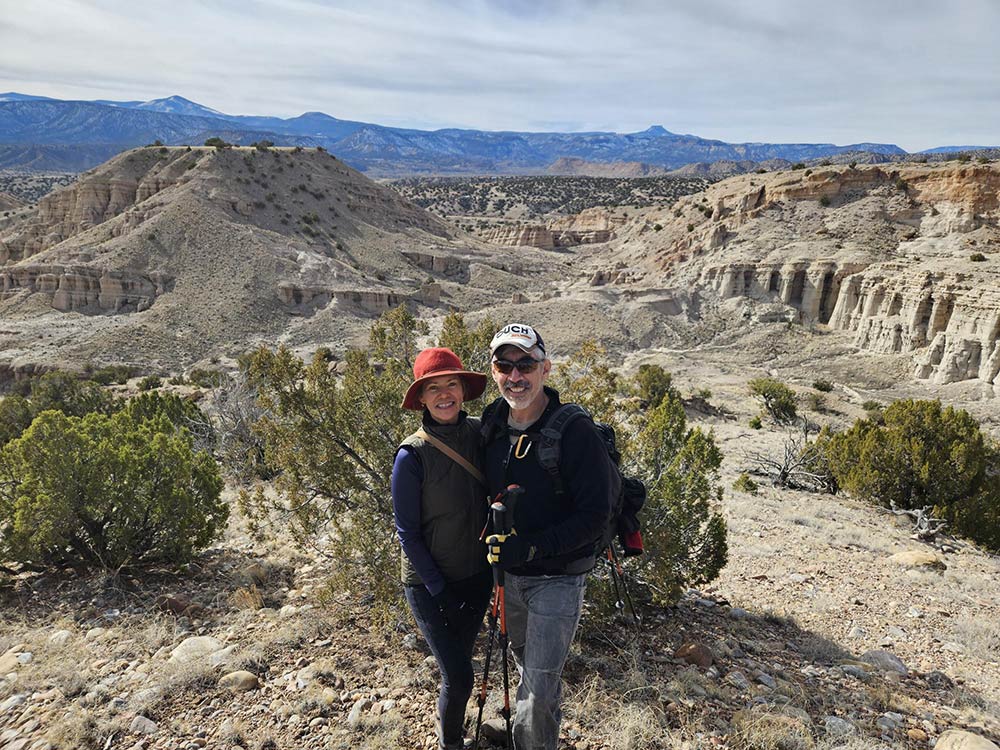
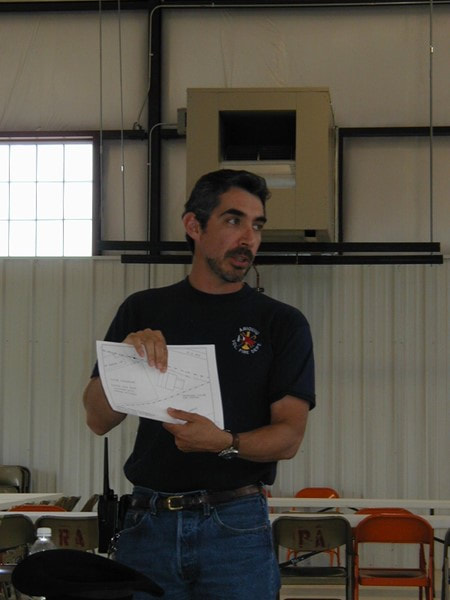

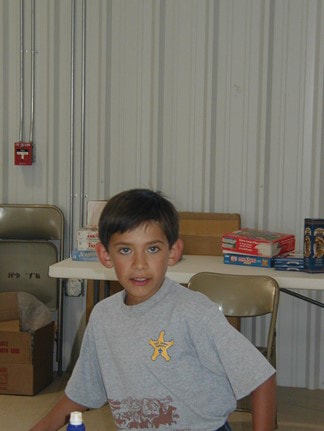
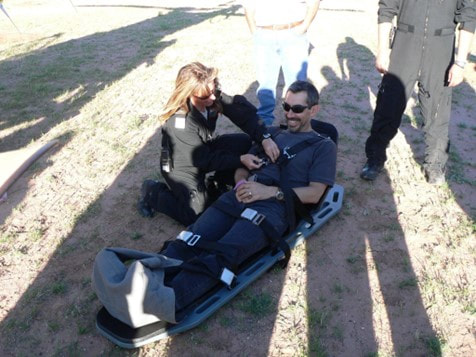
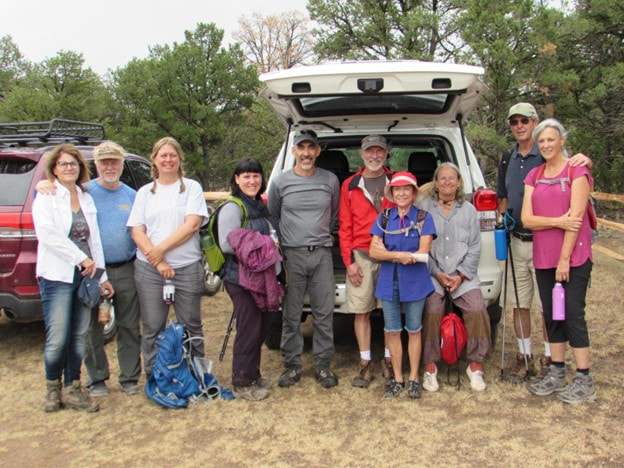
 RSS Feed
RSS Feed